The destinations most in danger around the world
Threatened treasures
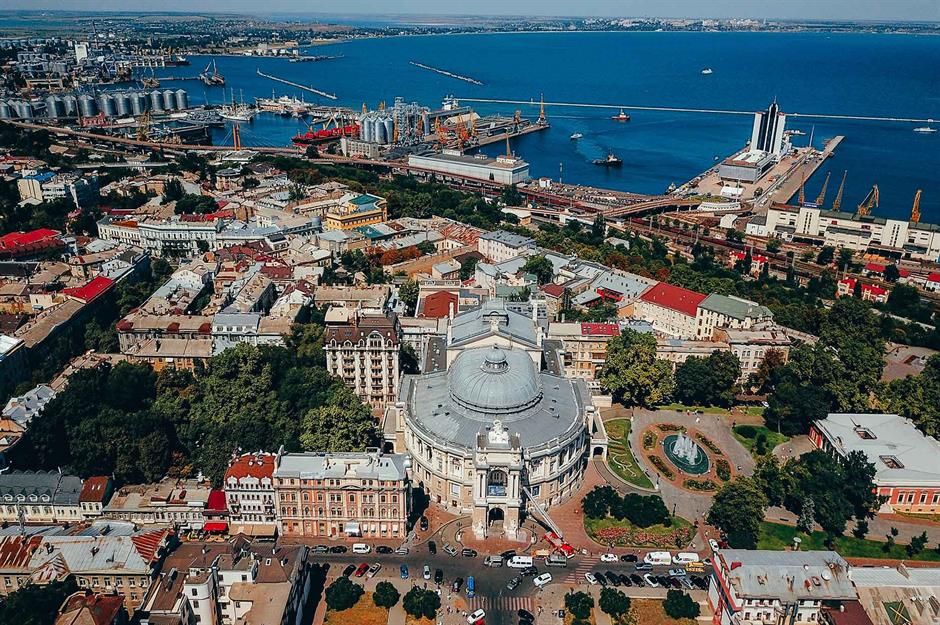
In 2023, three more sites were added to the UNESCO World Heritage in Danger List, which calls for the safeguarding of cultural and natural treasures at risk of being lost forever. In total, the UN department has identified 55 sites that are at risk due to climate change, armed conflict, development, poor management or a combination of all those issues. Here are all the sites they've listed so far...
Landmarks of the Ancient Kingdom of Saba, Mrib, Yemen
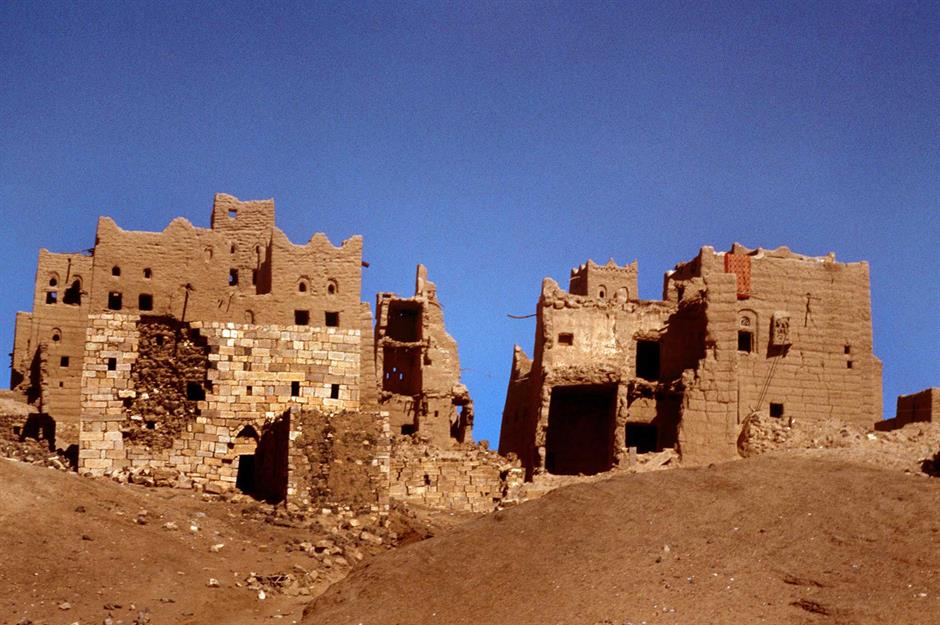
One of the newly-added sites is the Landmarks of the Ancient Kingdom of Saba in Yemen. These comprise seven archaeological sites built during the Kingdom of Saba (roughly 1000 BC to AD 630) and revered for their eye-pleasing architecture. Located in a semi-arid landscape of valleys, mountains and deserts, these ancient landmarks include the remains of large urban settlements. However, due to threats of destruction from the country’s ongoing civil war, in 2023 it was placed on the List of World Heritage in Danger.
Rachid Karami International Fair-Tripoli, Lebanon
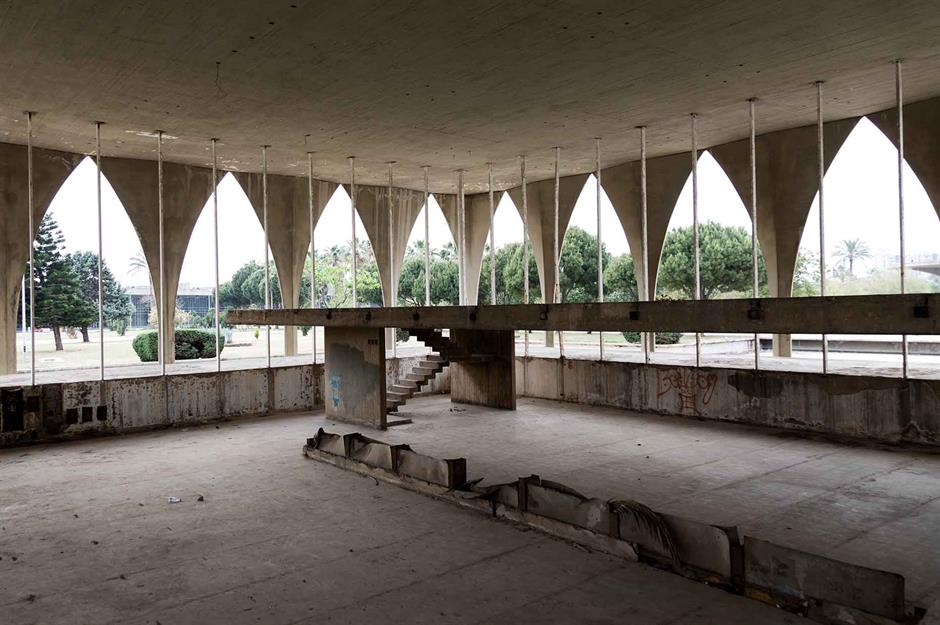
Another newcomer is Libya's 70-hectare Rachid Karami International Fair of Tripoli, built in 1962 and located between the historic centre of Tripoli and the Al Mina Port. Pictured here is the interior of the huge covered hall, a function space that makes up the fair’s main building. However, according to UNESCO the site is now in an "alarming state of conservation" due to low financial resources needed for maintenance, as well as development proposals which could risk the integrity of the complex. It was added to the List of World Heritage in Danger in 2023.
The Historic Centre of Odessa, Ukraine
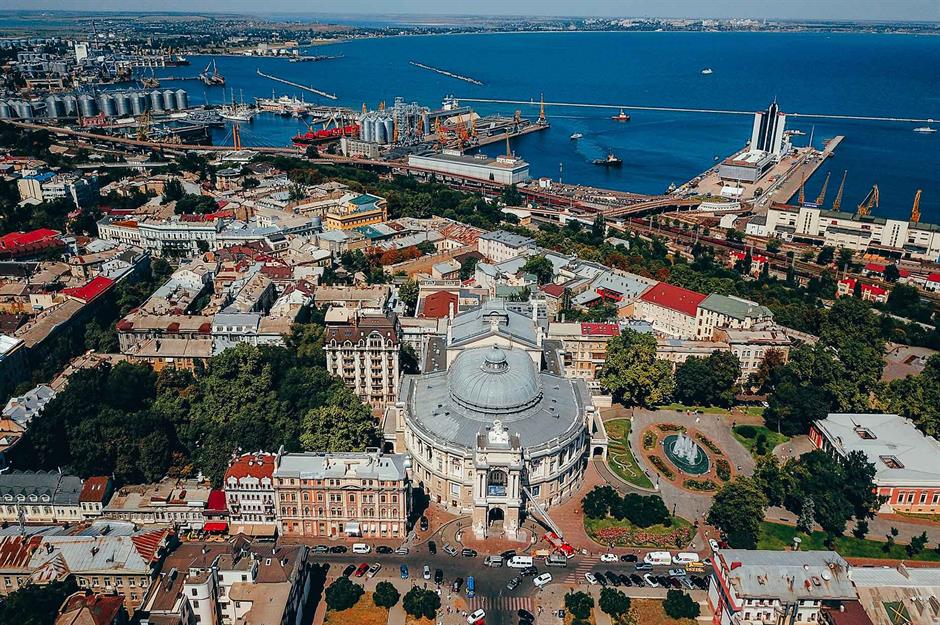
Founded in the 18th century, Odessa became one of the most important ports and cosmopolitan cities in eastern Europe. But following the ongoing Russian invasion in February 2022, a number of buildings have been damaged by shelling – such as the palatial Odessa Museum of Fine Arts and the Odessa Museum of Modern Art – causing the historic centre to be added to the List of World Heritage in Danger in 2023.
Roșia Montană Mining Landscape, Romania
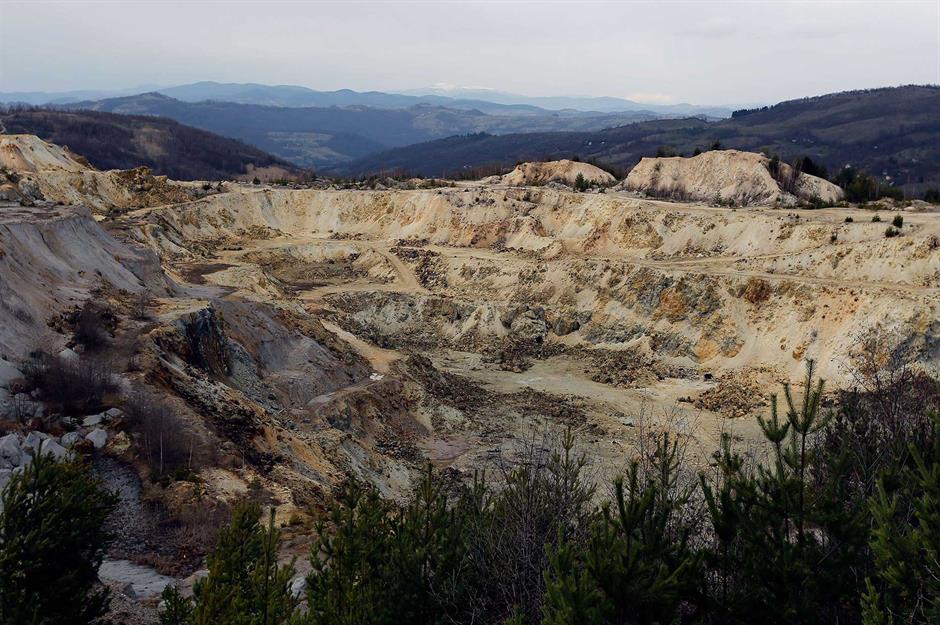
Located in the Apuseni Mountains in western Romania, the Roșia Montană Mining Landscape is famed for Roman-era gold-mining that took place for 166 years, where some 500 tonnes of gold were extracted. While mining continued in the medieval age, in 2021 the Mining Landscape was placed on the List of World Heritage in Danger. Proposed plans to resume mining would damage a major part of this UNESCO site of Outstanding Universal Value.
Bamiyan Valley, Afghanistan
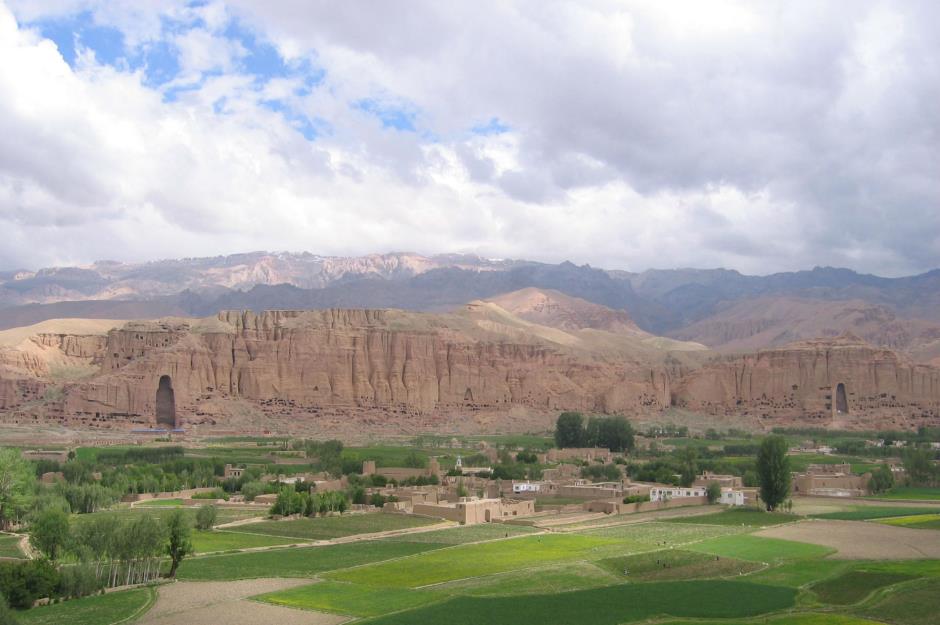
Minaret and Archaeological Remains of Jam, Afghanistan

Tucked into a plunging river valley amid soaring mountains, the Minaret of Jam is a striking sight. Dating to the 12th century, it's a fine example of the architectural styles of Central Asia's Islamic period, and is celebrated for its detailed brickwork. The leaning tower, which was built by the great Ghurid Sultan Ghiyas-od-din, was placed on the danger list in 2002, due to a lack of staff to ensure the security and preservation of the property.
Historic centre of Vienna, Austria
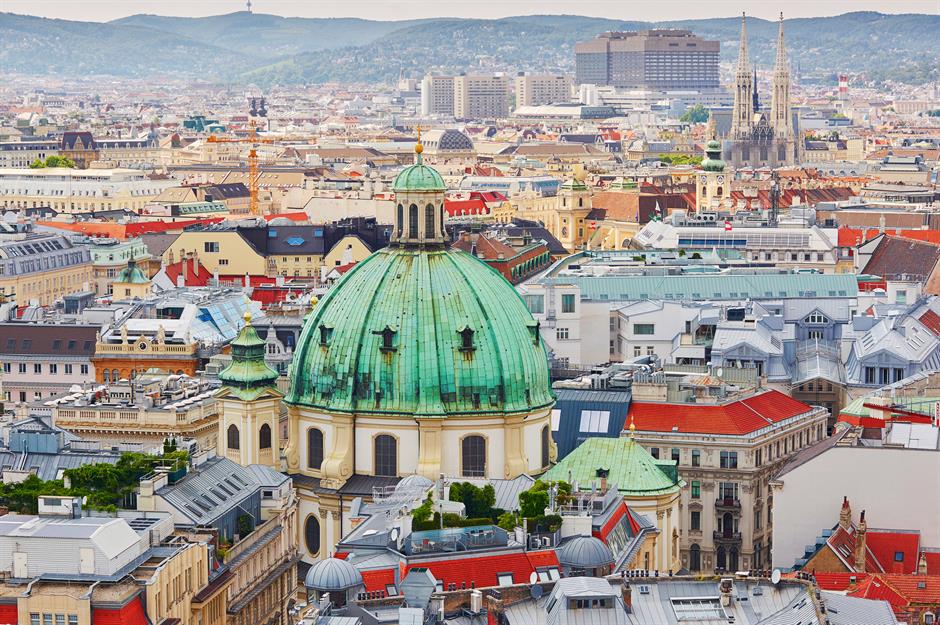
Known for its Baroque mansions and gardens and its medieval heart, Vienna’s city centre received UNESCO status in 2001. But with a new high-rise project threatening to change the city’s skyline, its historic centre was placed on the danger list in 2017. UNESCO said: “Vienna’s continuing development requires a very sensitive approach that takes into account the attributes that sustain the outstanding universal value of the property."
City of Potosí, Bolivia
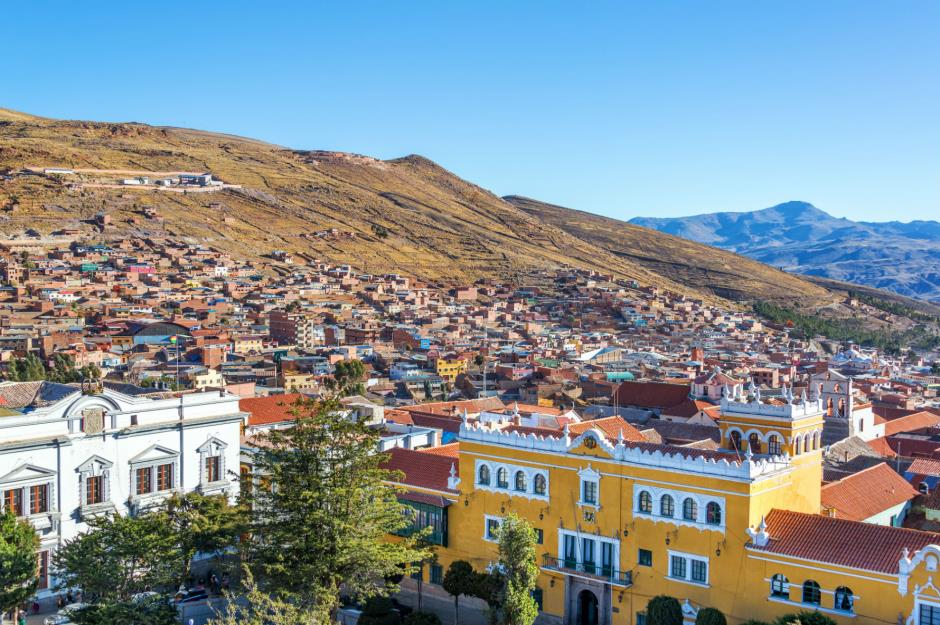
The city of Potosí, a silver mining centre in the south of Bolivia, was once considered to be the world’s largest industrial complex. And today, the area is full of archaeological significance, including the industrial monuments of the Cerro Rico (Rich Mountain), its colonial core, and the 'barrios mitayos', where the workers lived. But, over centuries, the mining activity here has rendered the site porous. As parts of the mountain have become unstable and collapsed, the city's beautiful buildings are in peril.
Manovo-Gounda St Floris National Park, Central African Republic
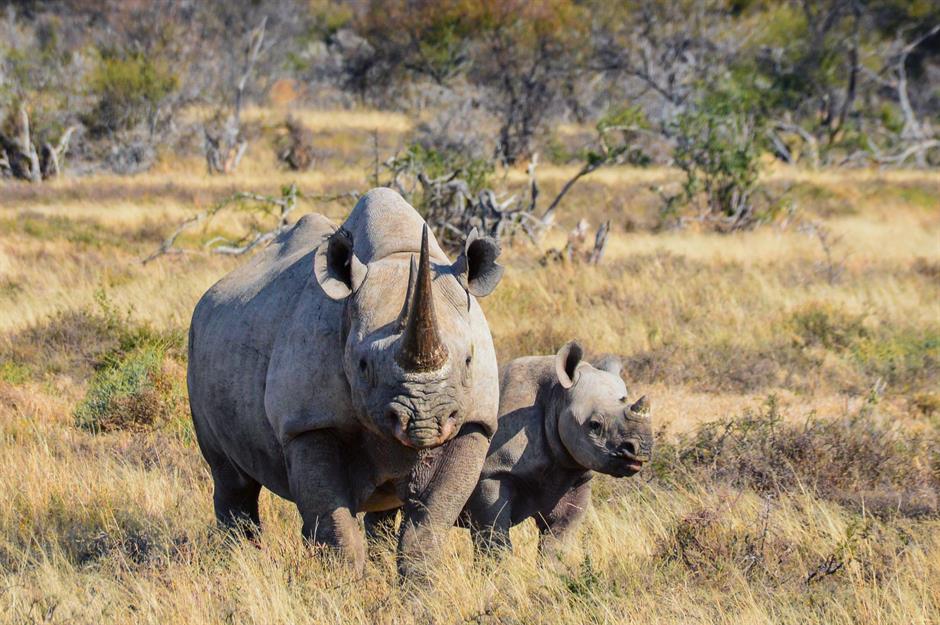
Mount Nimba Strict Nature Reserve, Côte d'Ivoire and Guinea
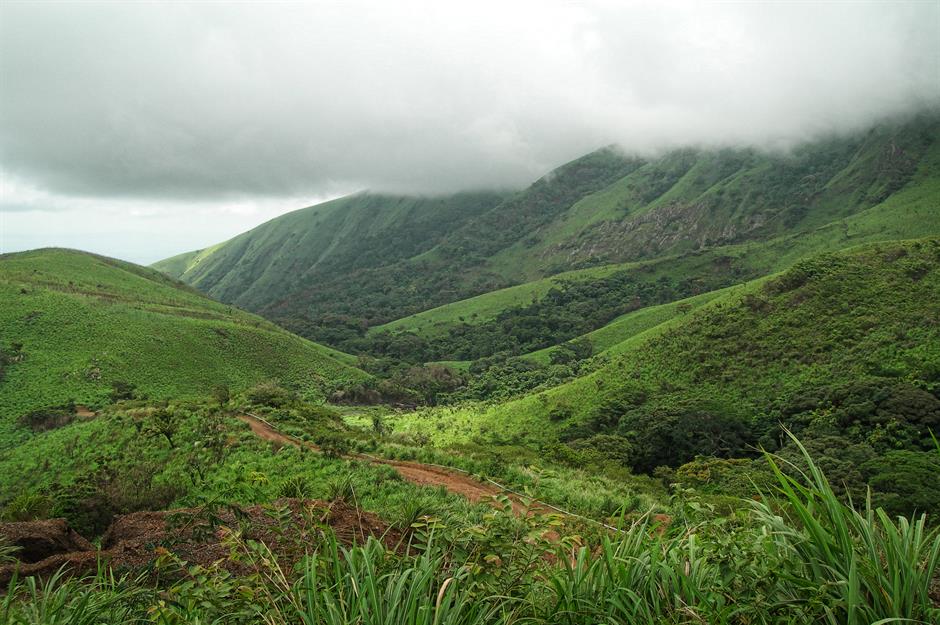
A UNESCO Biosphere Reserve for both Guinea and Côte d’Ivoire, this verdant site is made up of thick forest draped over the slopes of Mount Nimba, and is home to many extraordinary species, including the endemic viviparous toad and chimpanzees. But the reserve faces numerous pressures on its boundaries, and intense poaching and the practice of clearing land for agriculture by fire have increased. Both Guinea and Côte d'Ivoire are working to protect the property by empowering local communities and promoting transboundary cooperation, UNESCO notes.
Garamba National Park, Democratic Republic of the Congo
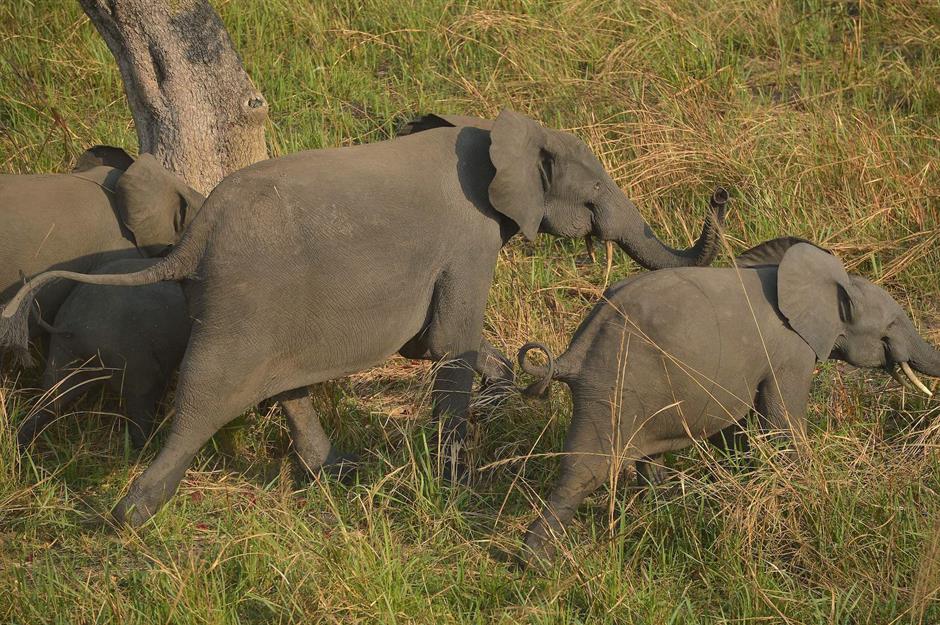
Poaching is also why Garamba National Park was inscribed on the danger list in 1996. The vast stretch of savannah and woodland in the northeastern Democratic Republic of Congo is home to one of the largest, most threatened populations of elephants in central Africa. The park was also home to the world's last known wild population of northern white rhinos, though it's thought that the species is now extinct in the wild. Counter-poaching measures, including aerial patrols, have been implemented in recent years, but the park's incredible wildlife is still at risk.
Kahuzi-Biega National Park, Democratic Republic of the Congo
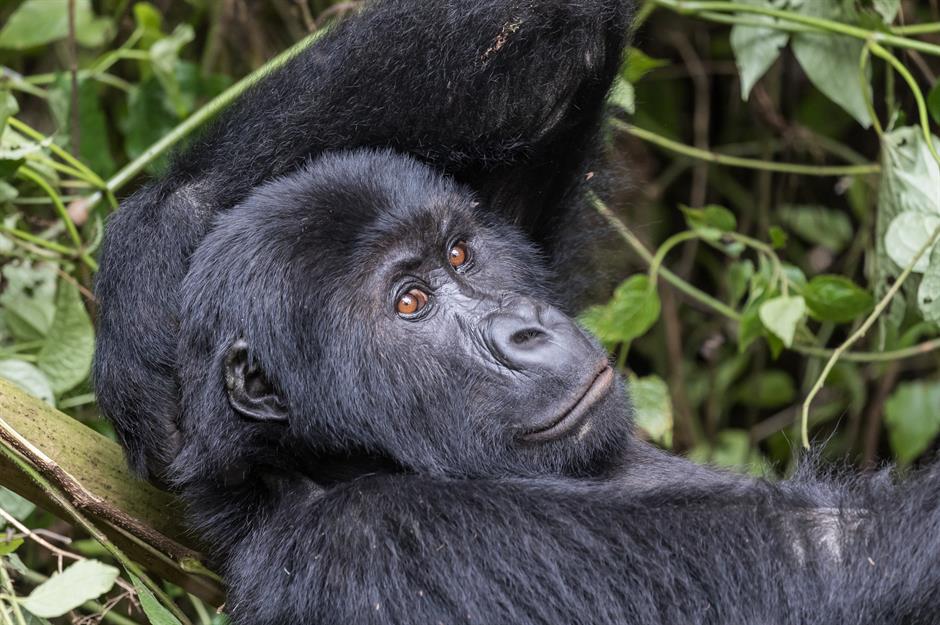
One of the last groups of eastern lowland gorillas live in the dense primary tropical forest of this national park in eastern DRC. It's watched over by a pair of extinct volcanoes, and its 250-strong gorilla population live at soaring heights of up to 7,874 feet (2,400m) above sea level. Poaching and illegal mining, coupled with inadequate funds and workers to protect it, are among the issues affecting this stunning reserve.
Okapi Wildlife Reserve, Democratic Republic of the Congo
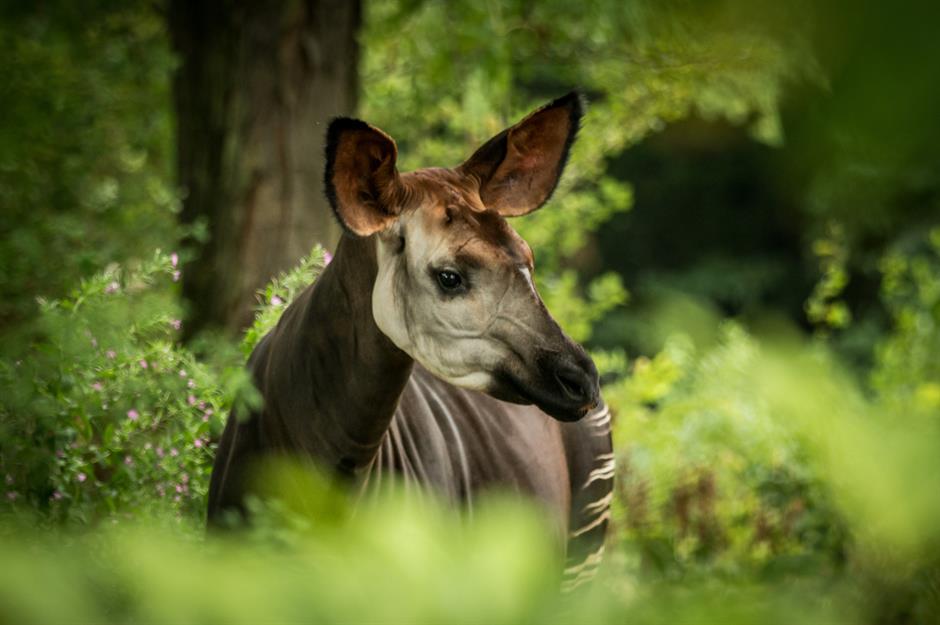
Named after the rare okapi (or forest giraffe) that live in the Ituri forest, this huge swathe of land in the northeast of DRC was created to protect a wide range of rare flora and fauna. It has also been home to the Mbuti and Efe peoples (traditional nomadic pygmy hunter-gatherers) for centuries. The reserve was listed as under threat in 1997 due to the commercial hunting of bushmeat, slash-and-burn forest clearance and illegal mining and logging. Ensuring the involvement of the indigenous populations in the management of the reserve is critical, says UNESCO.
Virunga National Park, Democratic Republic of the Congo
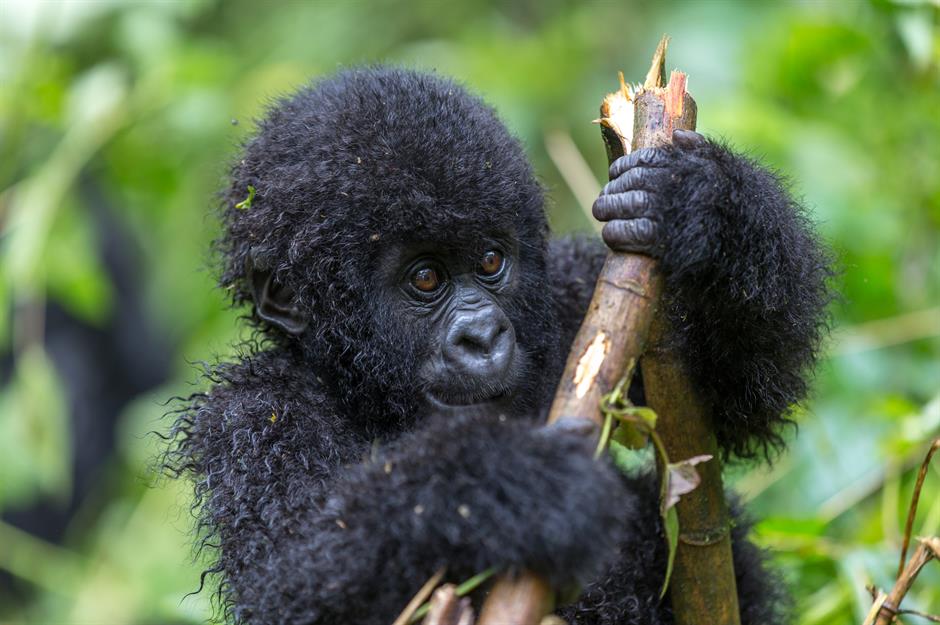
Created in 1925, Virunga National Park in the eastern part of Democratic Republic of the Congo is Africa’s oldest national park. It's home to a quarter of the world’s critically endangered mountain gorillas, as well as the rare okapi, elephants, leopards, hippos and chimpanzees. The park was shut for more than eight months in 2018 after a series of attacks by militia and smugglers on staff. It reopened in early 2019, but another ranger was shot. UNESCO is urging for strengthened security to combat threats to staff, poaching, deforestation and smuggling.
Abu Mena, Egypt
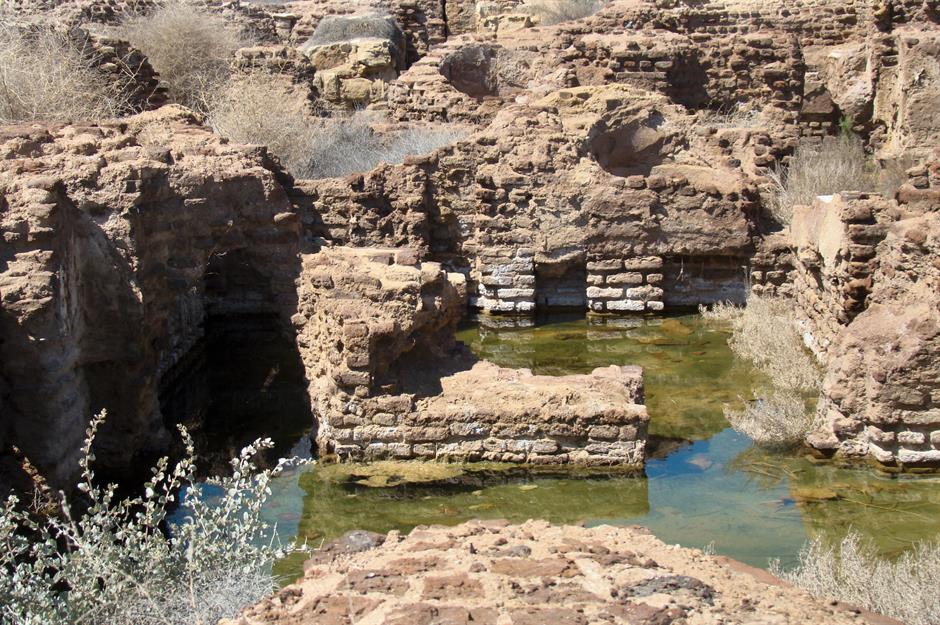
The archaeological site of Abu Mena, near Alexandria, houses the remains of an early Christian holy city, which was built over the tomb of Saint Menas of Alexandria, martyred in the 3rd century. But, sadly, the foundations of some of the great ruined buildings here have collapsed due to a rise in the water table. The site remains unstable and it was inscribed on the danger list in 2001.
We still don't know the answers to these Ancient Egyptian mysteries
Río Plátano Biosphere Reserve, Honduras

Tropical Rainforest Heritage of Sumatra, Indonesia
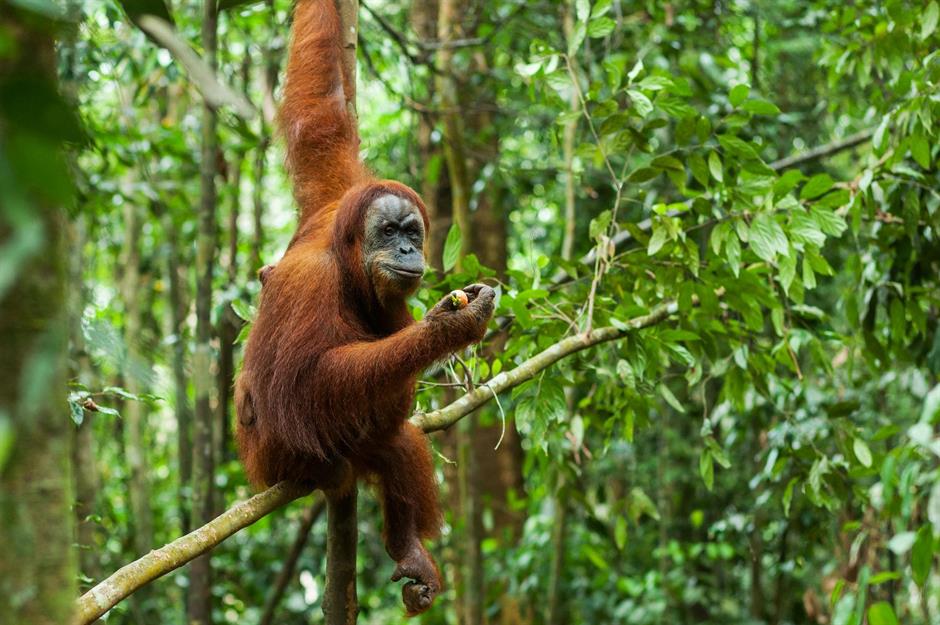
This site, measuring two and a half million hectares, is made up of three national parks: Gunung Leuser National Park, Kerinci Seblat National Park and Bukit Barisan Selatan National Park, and includes many endangered species. The area is mind-boggling in its diversity, home to an estimated 10,000 plant species, more than 200 mammal species, and 580 bird species. But, like so many others, the site is in danger due to myriad human threats, which include poaching, illegal logging, agricultural encroachment and plans to build roads through the site.
Ashur (Qal'at Sherqat), Iraq
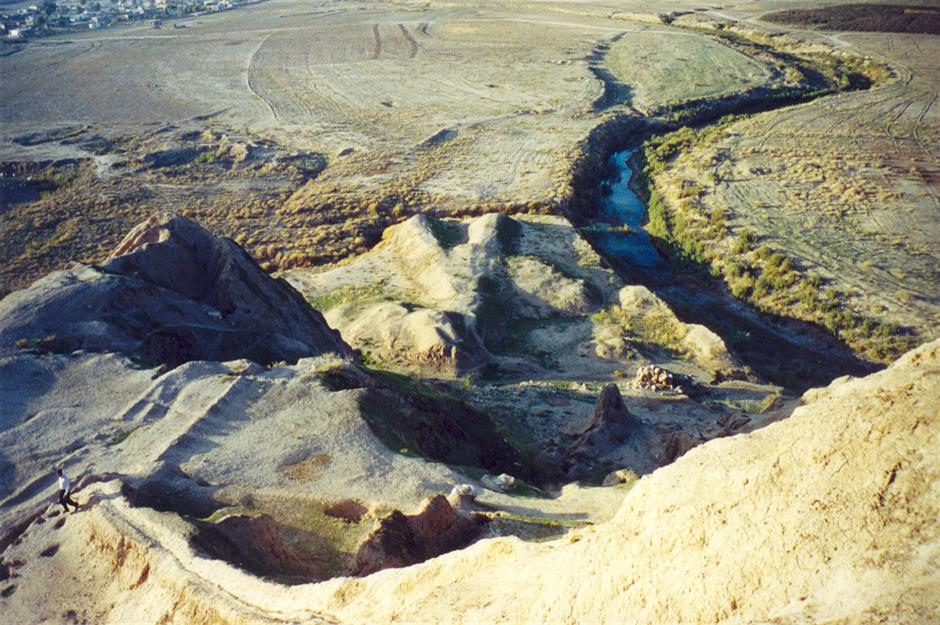
Hatra, Iraq
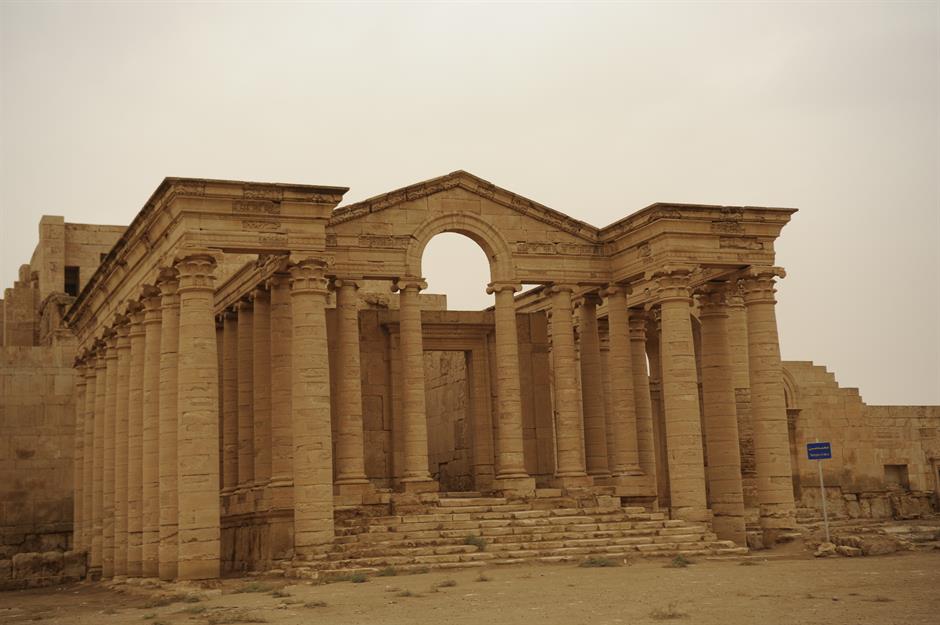
Samarra Archaeological City, Iraq
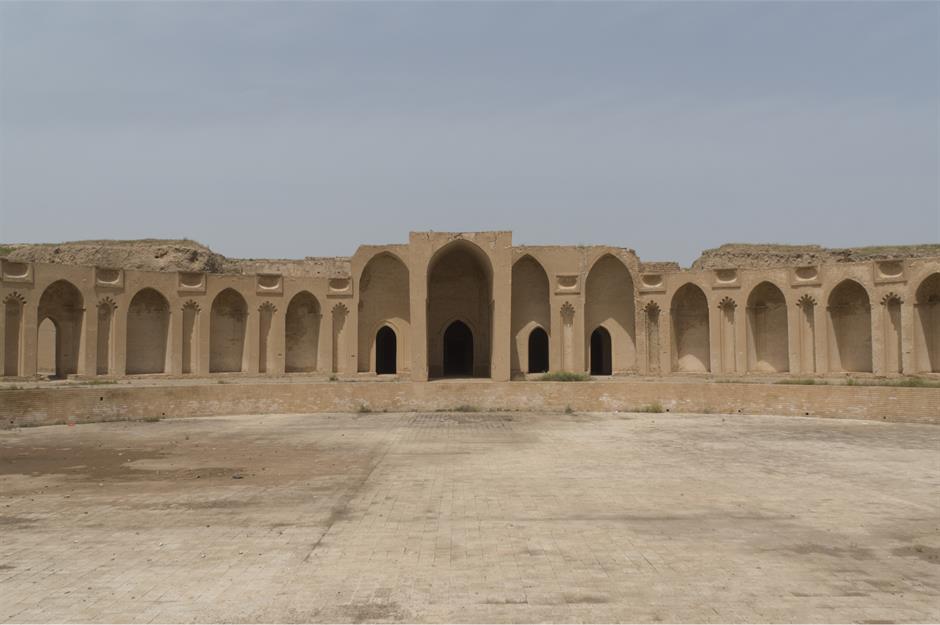
Renowned for its 9th-century mosque and spiral minaret, the Samarra archaeological city is one of Iraq’s most significant cultural treasures. It was the site of a mighty Islamic capital city, which ruled over the provinces of the Abbasid Empire in the 9th century. And, according to UNESCO: “it is the only surviving Islamic capital that retains its original plan, architecture and arts, such as mosaics and carvings.” It was placed on the danger list due to a lack of government control and conflict in the area that threatens its integrity.
Old City of Jerusalem and its Walls
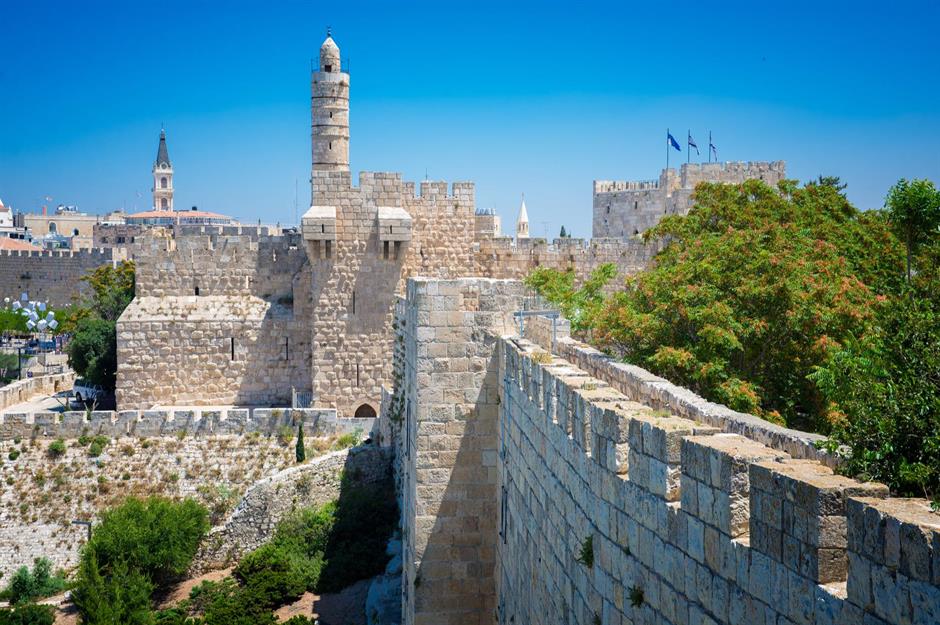
Lake Turkana National Parks, Kenya
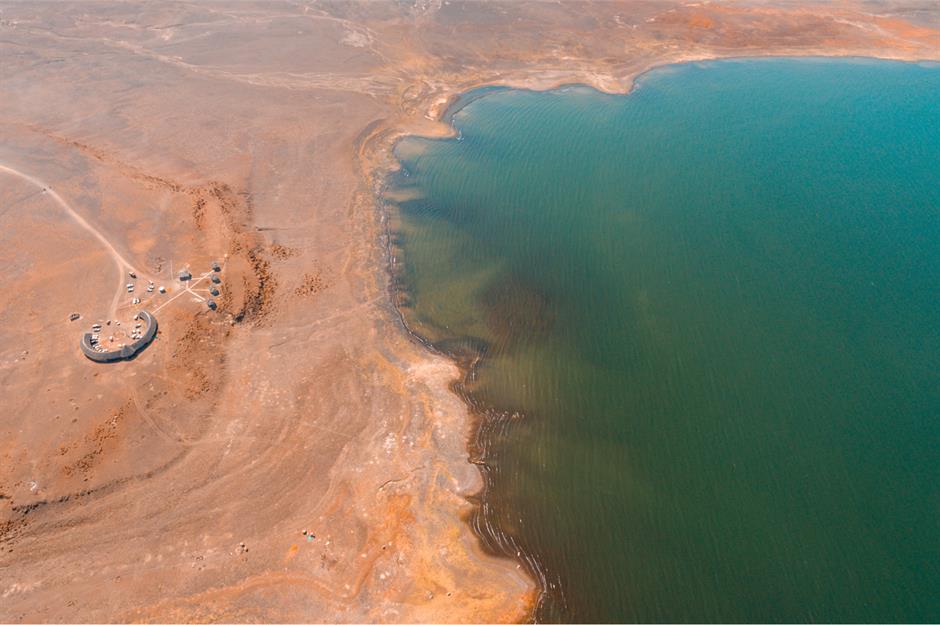
Cyrene, Libya
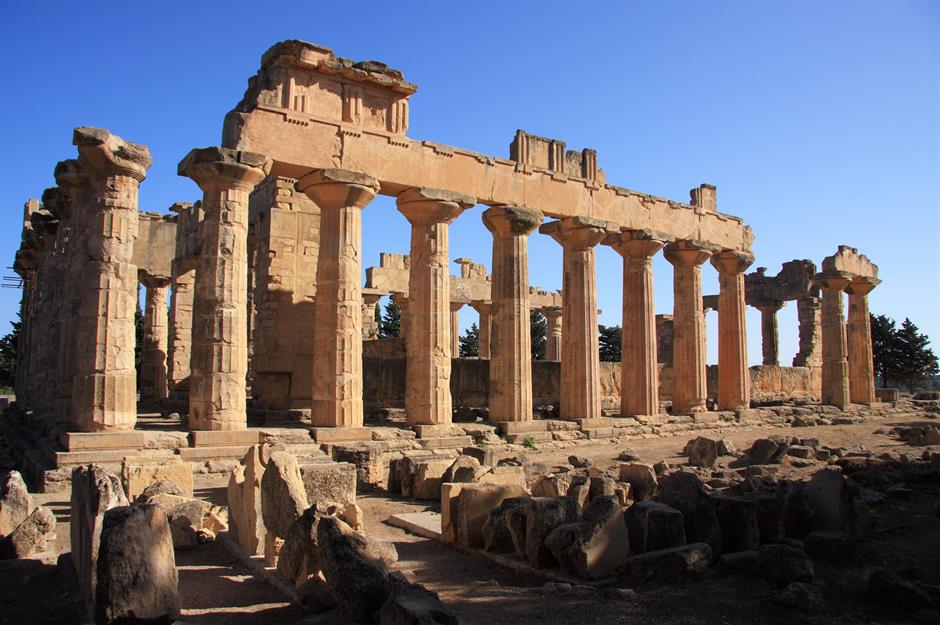
The Old Town of Ghadamès, Libya
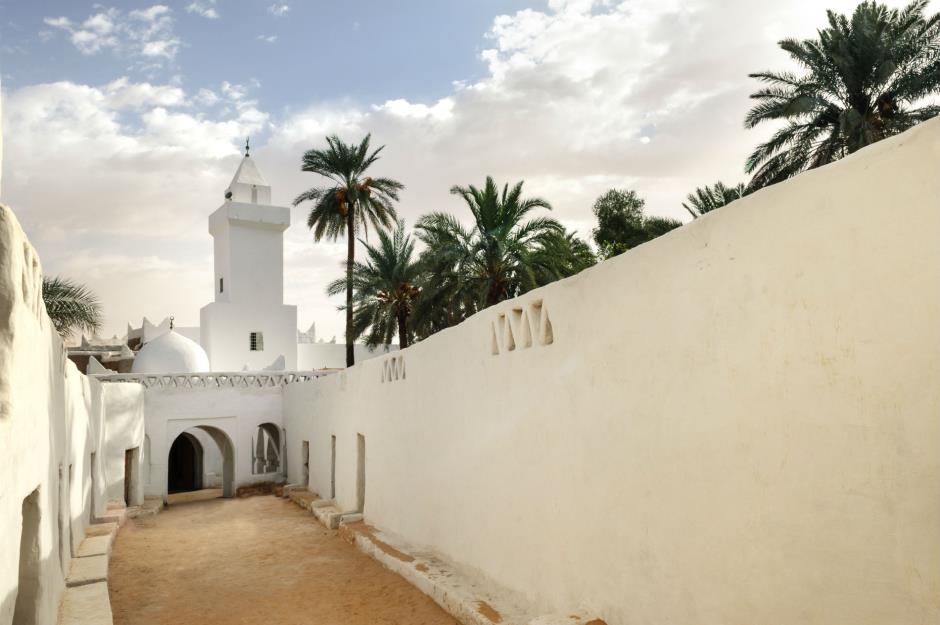
Leptis Magna, Libya
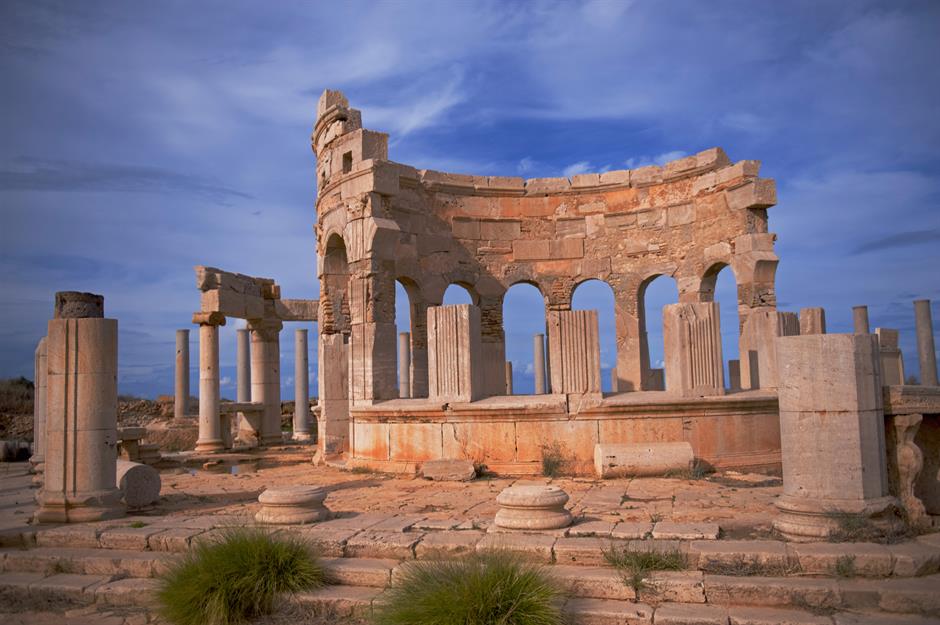
The Roman ruins of Leptis Magna, on Libya’s Mediterranean coast, are considered among the finest Roman remains in the world. Still, though, they're a mere echo of the former city, which was replete with a harbour, homes and grand public monuments, and was the birthplace of Roman emperor Septimius Severus. It was designated a UNESCO World Heritage Site in 1982 and also added to the danger list in 2016.
Sabratha, Libya
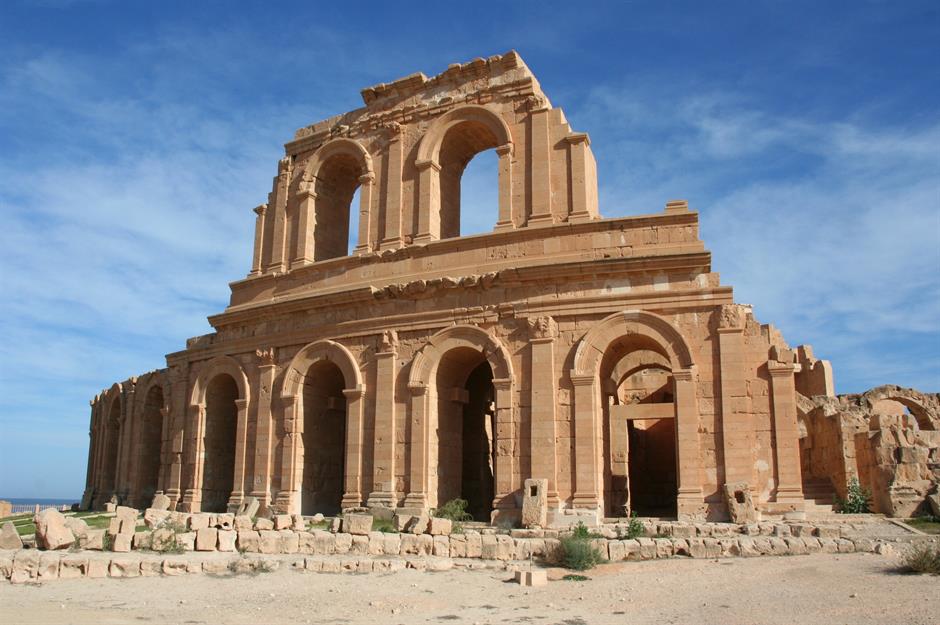
Tadrart Acacus Rock Art, Libya
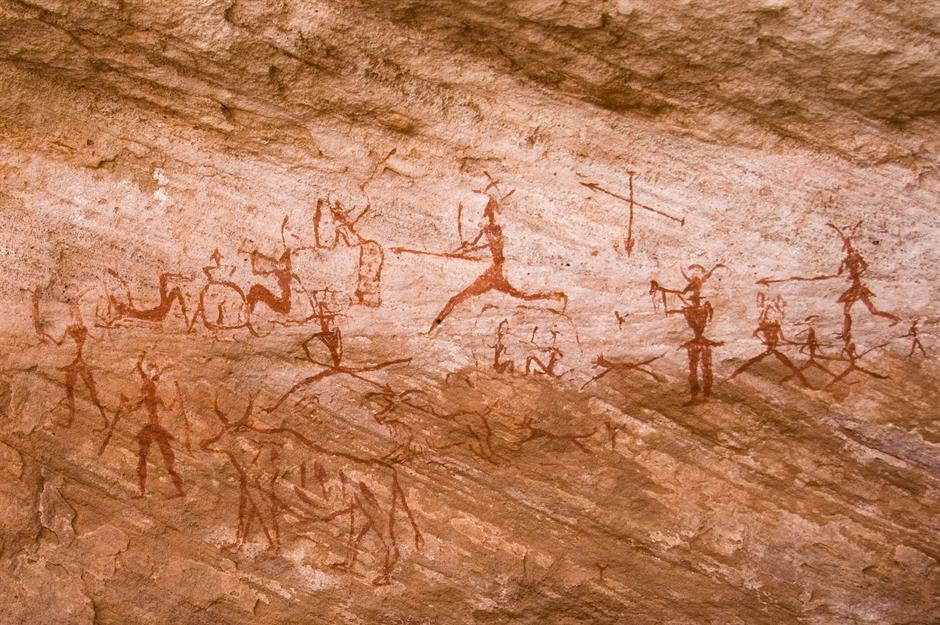
Rainforests of the Atsinanana, Madagascar
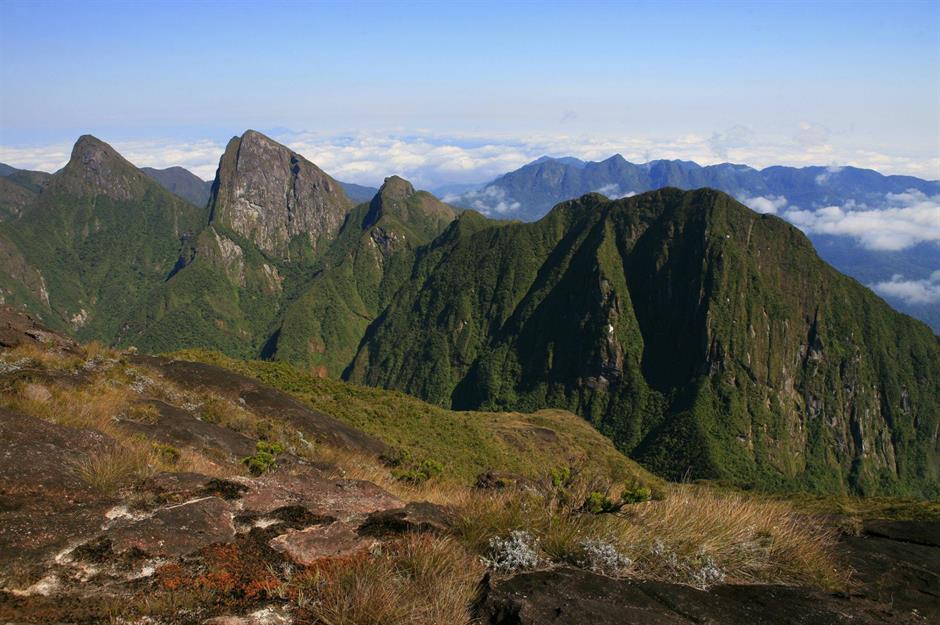
Old Town of Djenné, Mali
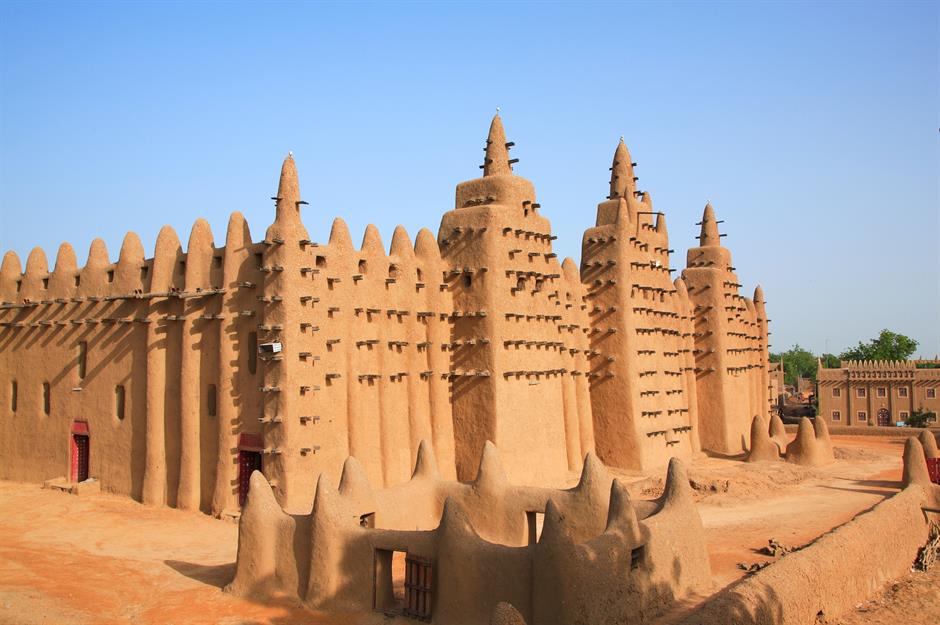
One of the oldest towns of sub-Saharan Africa, the Old Town of Djenné has been inhabited since 250 BC. Nearly 2,000 of its original mud-walled houses have survived, and its mosque and other historic buildings were designated a World Heritage site in 1988 for being "representative of Islamic architecture in sub-Saharan Africa". It was inscribed on the danger list in 2016 due to insecurity affecting the area.
Find more secret wonders hidden in the world's largest deserts
Tomb of Askia, Mali
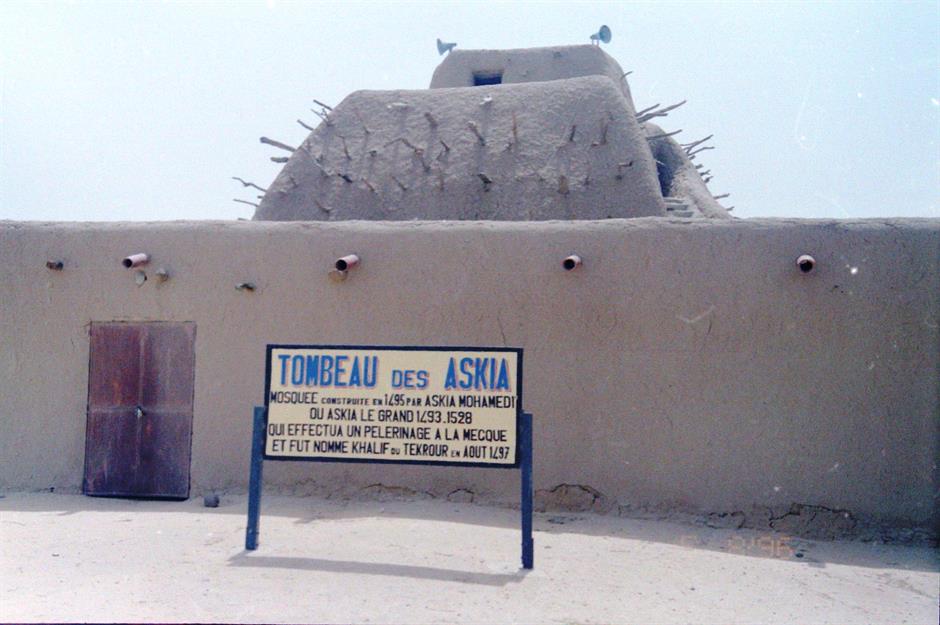
Set on the Niger River is this 55-foot (17m) mud-brick pyramidal structure, which was constructed by Askia Mohamed, the Emperor of Songhai, in the 15th century. The site, which was recognised by UNESCO in 2004, also includes two flat-roofed mosques, a cemetery and a square. The Tomb of Askia is now used as a mosque and cultural centre by the people of Gao, but was marked as endangered in 2012 due to conflict-related damage.
Timbuktu, Mali
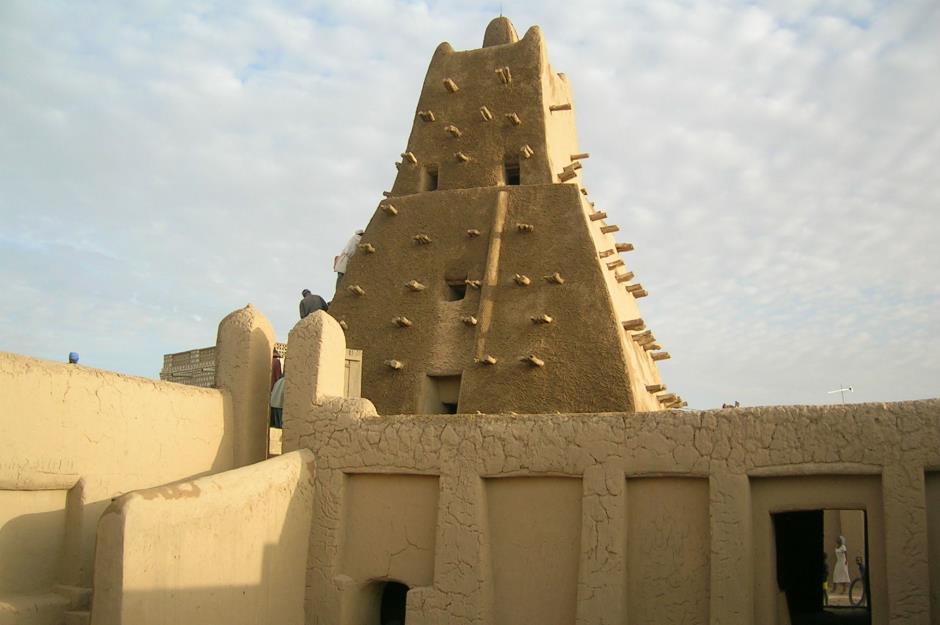
Islands and Protected Areas of the Gulf of California, Mexico
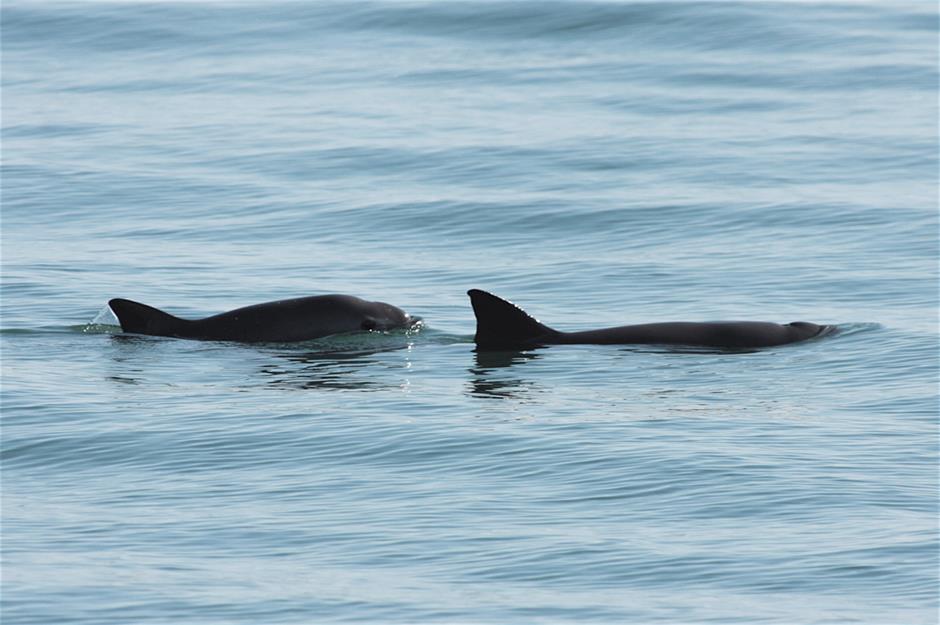
The imminent extinction of the vaquita – an endemic porpoise in Mexico’s Gulf of California tipped by WWF as the world’s rarest marine mammal – has seen the Islands and Protected Areas of the Gulf of California placed on the List of World Heritage in Danger for 2019. Despite Mexico's steps to protect them, which have included promoting fishing alternatives to gillnets (the main cause of their demise), only about 10 vaquita remain today. This is compared to nearly 300 in 2005.
Nan Madol, Eastern Micronesia
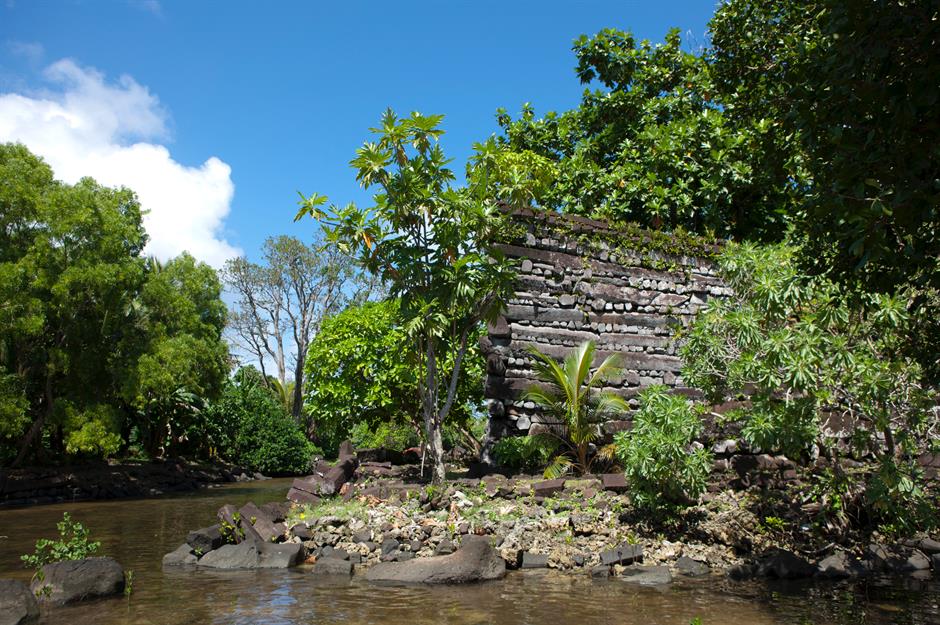
Upwards of 100 islets off the coast of Pohnpei, which house the ruins of stone palaces and tombs, make up the site of Nan Madol in Eastern Micronesia. Dating from AD 1200 to 1500, they were the ceremonial hub of the Saudeleur dynasty and, according to UNESCO, they reveal a great deal about “the complex social and religious practices of the Pacific island societies of the period”. In 2016, Nan Madol was listed "in danger" due to mangrove overgrowth, storm surge and stonework collapse.
Air and Ténéré Natural Reserves, Niger

Ténéré, within the Sahara Desert, is a vast sweep of sand that stretches right from north-eastern Niger into western Chad. In fact, it's the largest protected area in the continent at 7,736,000 hectares. The natural reserves are home to an array of plants and animals, including three threatened species of antelopes. The site was inscribed on the danger list in 1992 for a variety of reasons including political instability, poaching and grazing.
Hebron/Al-Khalil Old Town, Palestine
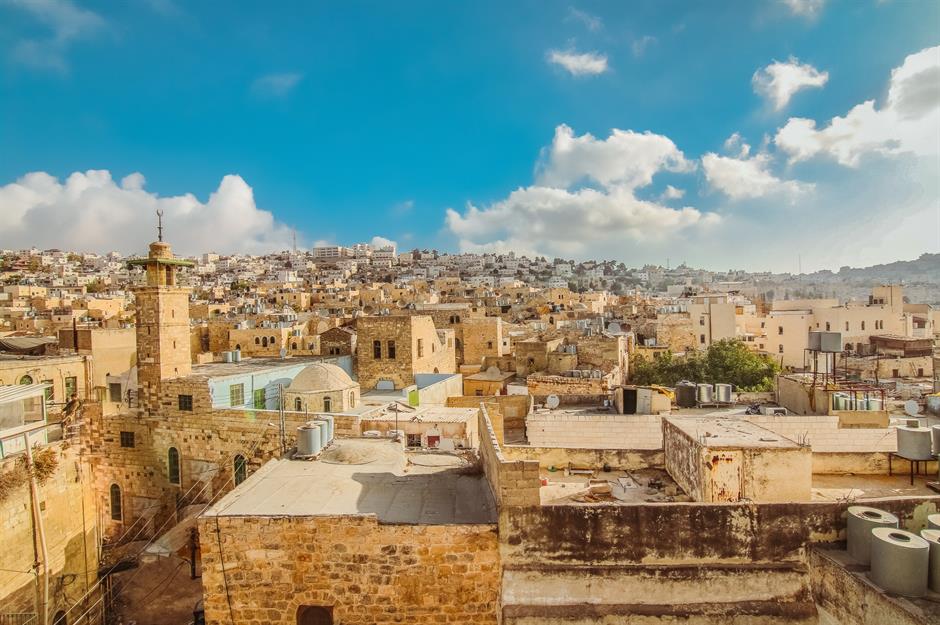
Land of Olives and Vines – Cultural Landscape of Southern Jerusalem, Battir, Palestine
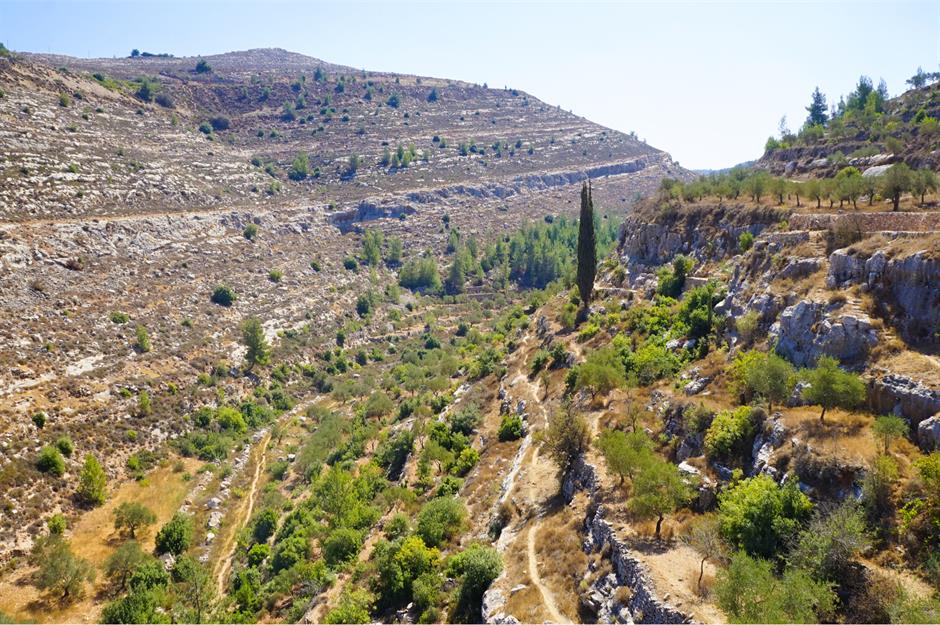
This series of ancient terraces, planted with grapevines and olives, have been used to cultivate Battir since antiquity. The local practices of this Palestinian village involve agricultural towers and a complex irrigation system, and represent some of the world's most ancient and fascinating farming techniques. They became a UNESCO World Heritage Site and were simultaneously added to the World Heritage in Danger list in 2014, as a separation wall had begun construction. This, UNESCO said, would isolate farmers "from fields they have cultivated for centuries”.
Fortifications on the Caribbean Side of Panama: Portobelo-San Lorenzo, Panama
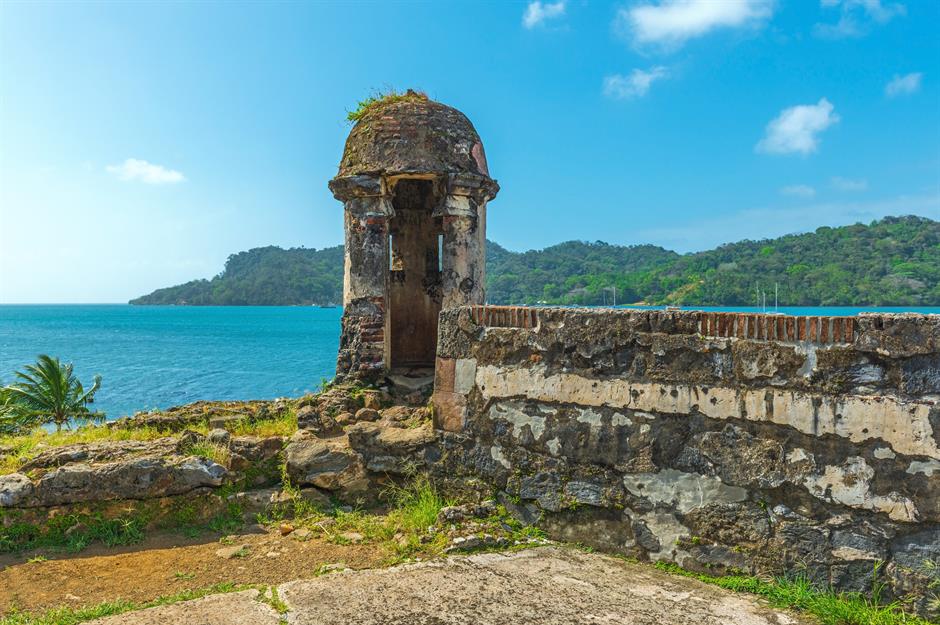
Chan Chan Archaeological Zone, Peru
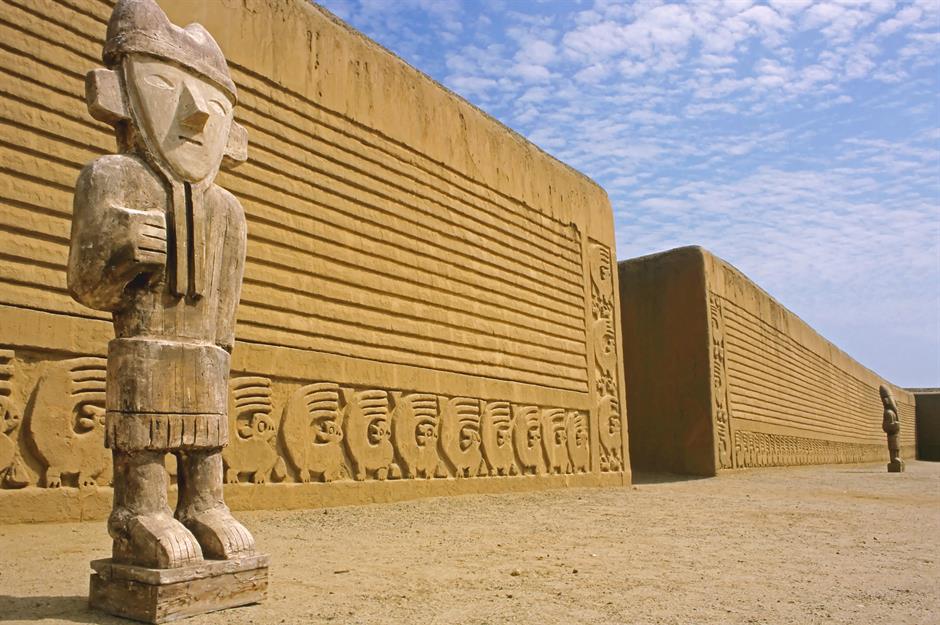
Capital of the ancient Chimu Kingdom before it fell to the Incas, Chan Chan was an enormous earthen city in pre-Columbian America. The incredible settlement is “an absolute masterpiece of town planning”, according to UNESCO. But it’s extremely fragile and vulnerable to decay and deterioration as a result of environmental events, including those caused by El Niño. The property has been on the List of World Heritage in Danger since 1986 and, despite the various protections in place, it continues to be at risk.
Niokolo-Koba National Park, Senegal
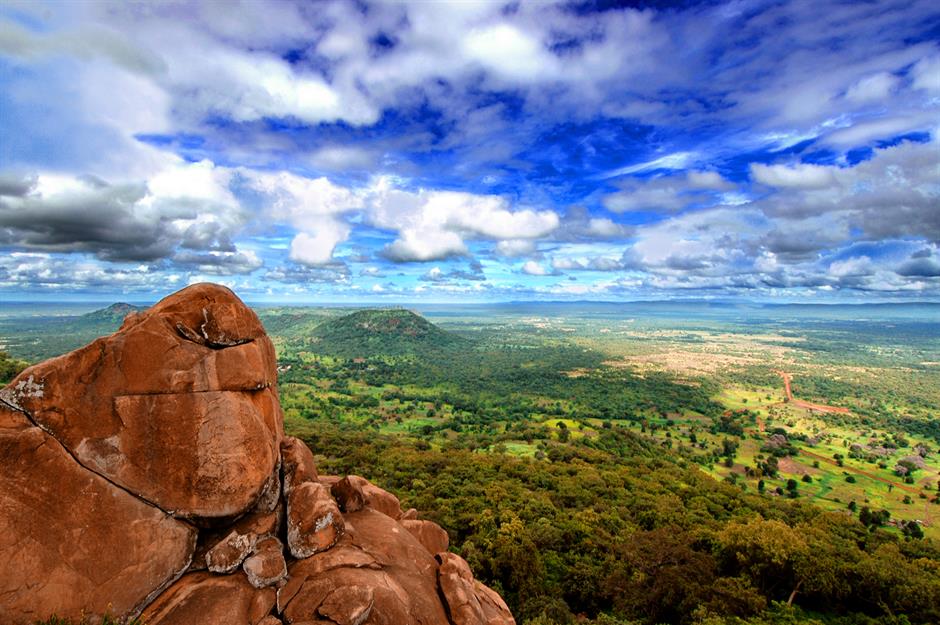
Medieval Monuments in Kosovo, Serbia
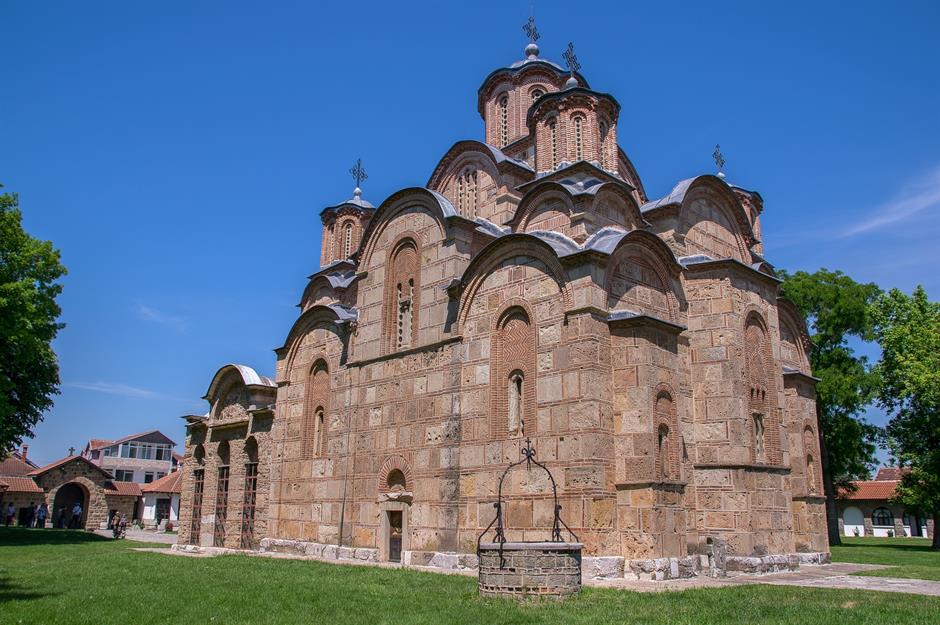
East Rennell, Solomon Islands
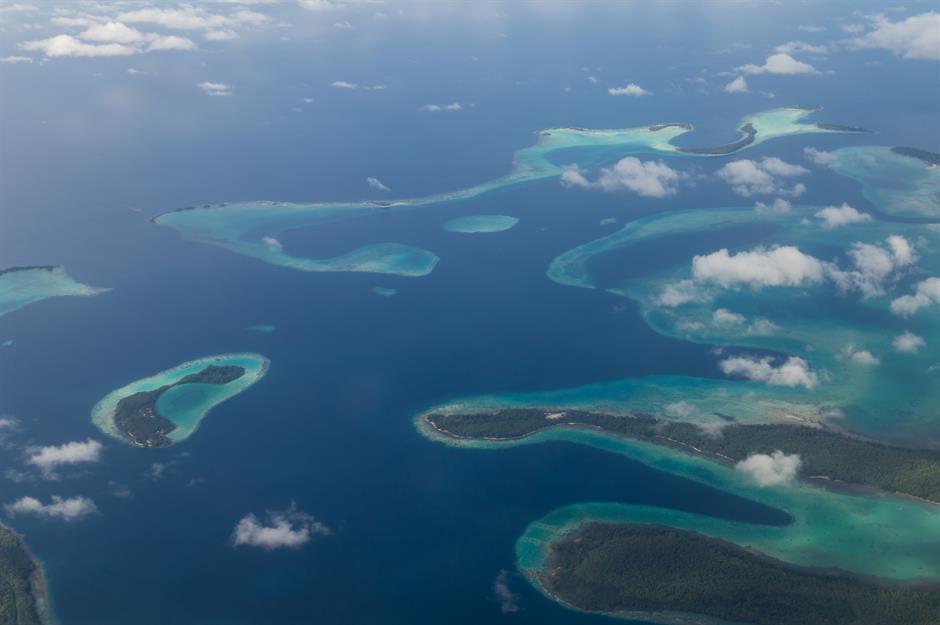
Ancient city of Aleppo, Syria
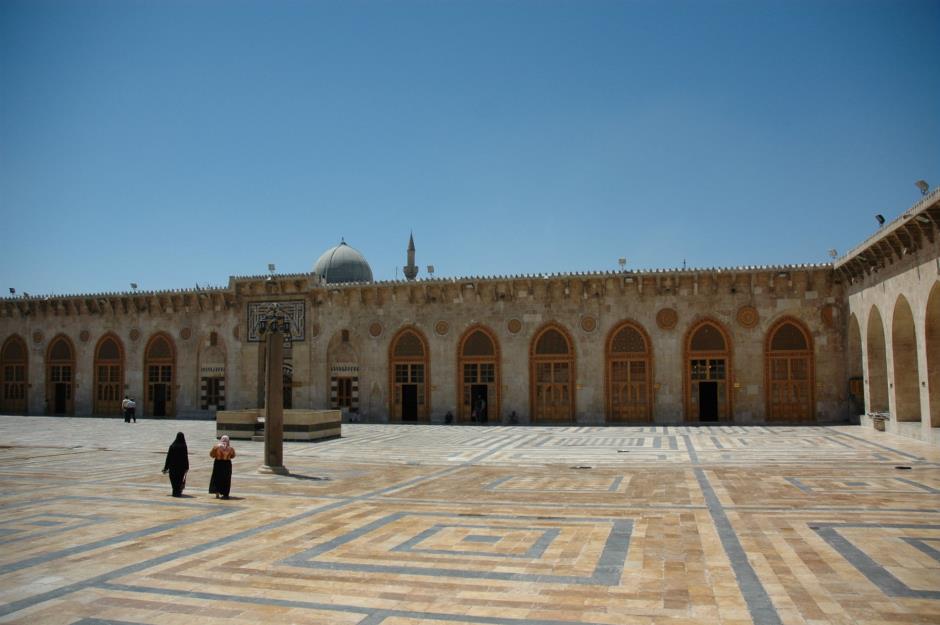
Ancient City of Bosra, Syria
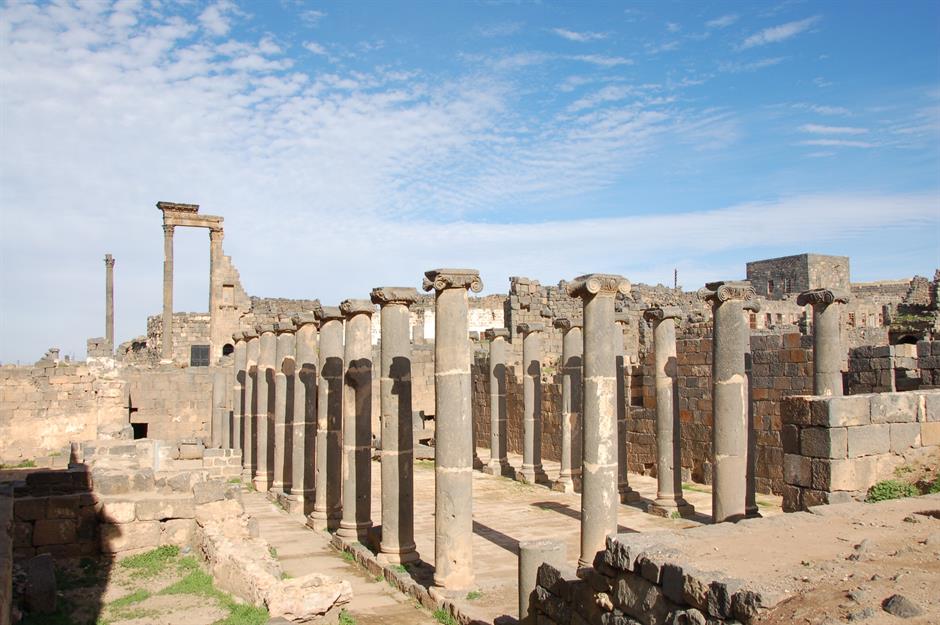
This ancient city was once the capital of the Roman province of Arabia and a stop-off point for pilgrims on the route to Mecca. The site is steeped in history and included a 2nd-century Roman theatre, early Christian ruins and several mosques. As a result of the ongoing civil war, fighting has caused irreparable damage to much of this culturally rich place.
Ancient City of Damascus, Syria
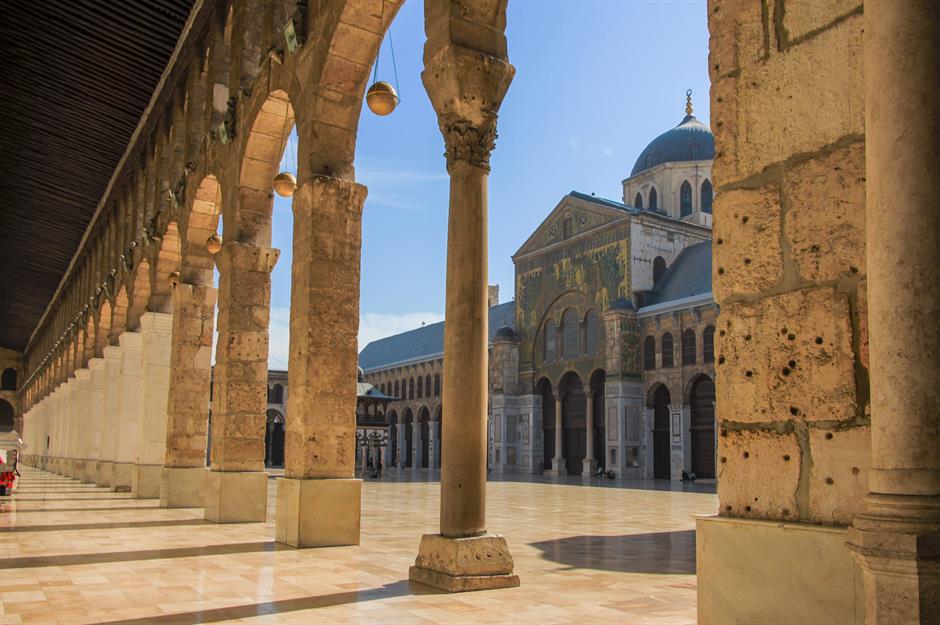
Syria’s capital, Damascus, is one of the oldest continually-inhabited cities in the world. Its incredible history and the many different civilisations that created it (Hellenistic, Roman, Byzantine and Islamic) are reflected in some 125 monuments scattered around the city. Among the most impressive are the 8th-century Great Mosque of the Umayyads and the Citadel of Damascus. Damascus has been deeply affected by the war, with many of its most important monuments damaged.
Ancient Villages of Northern Syria
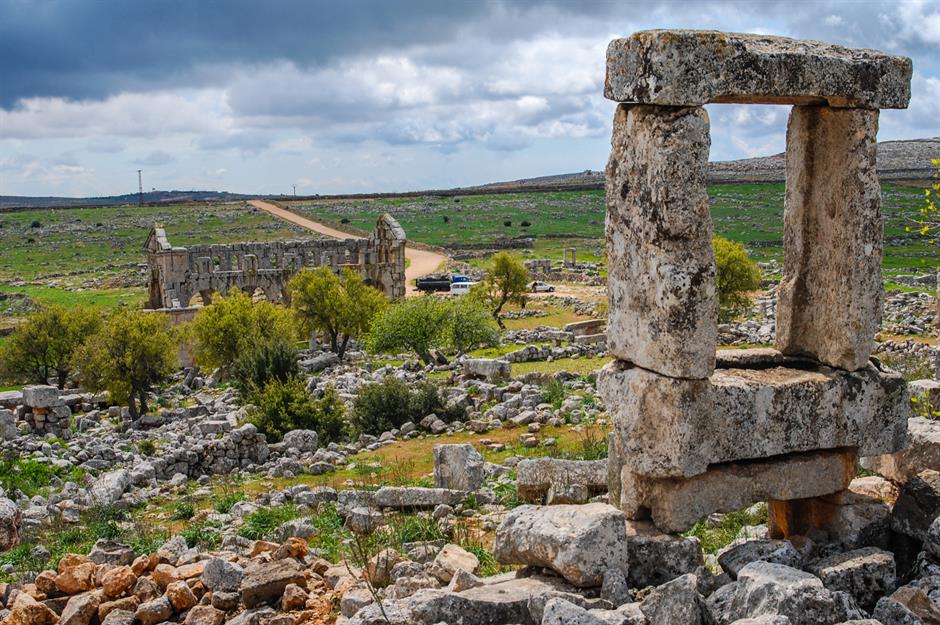
A remarkable group of 40 villages, situated across eight parks in northwestern Syria, were given UNESCO World Heritage Status due to the insights they provide of rural life in late antiquity and during the Byzantine period. They were abandoned between the 8th to 10th centuries, but the remains are incredibly well preserved. Sadly, numerable damage has occurred since the war began, particularly to the 5th-century Byzantine Church of Saint Simeon during an air strike in 2016.
Crac des Chevaliers and Qal’at Salah El-Din, Syria
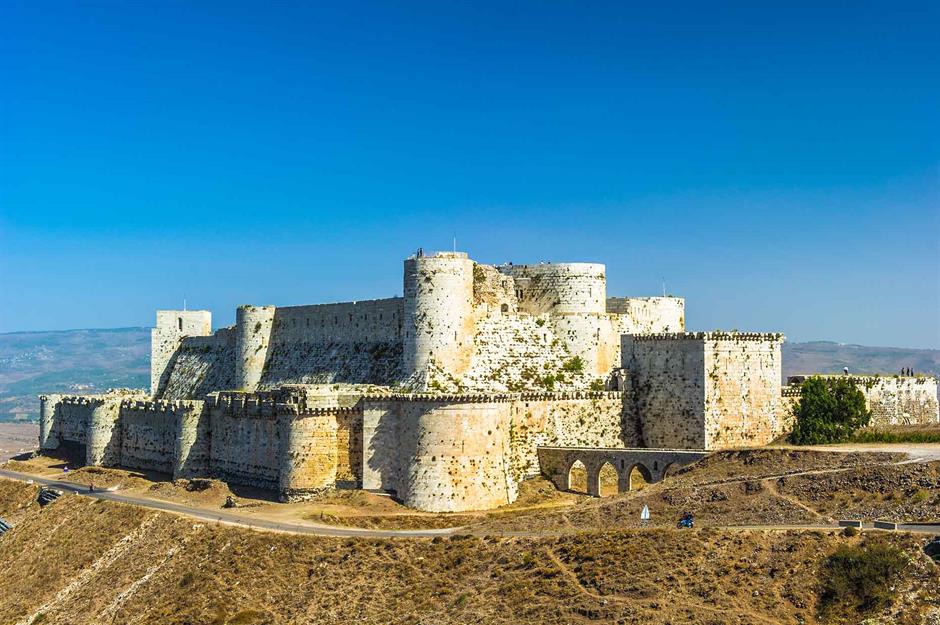
These two castles, located around a two-hour drive from each other in west Syria, are important examples of fortified architecture during the Byzantine, Crusader and Islamic periods (between the 11th and 13th centuries). Crac des Chevaliers (pictured), built between 1142 and 1271, is one of the best-preserved Crusader castles in existence today. While Qal’at Salah El-Din is partly in ruins, it still retains Byzantine features as well as additions made to the castle in the 12th and 13th centuries. There's need to protect the monuments from the development of nearby cities and construction of illegal buildings close to the sites.
Site of Palmyra, Syria
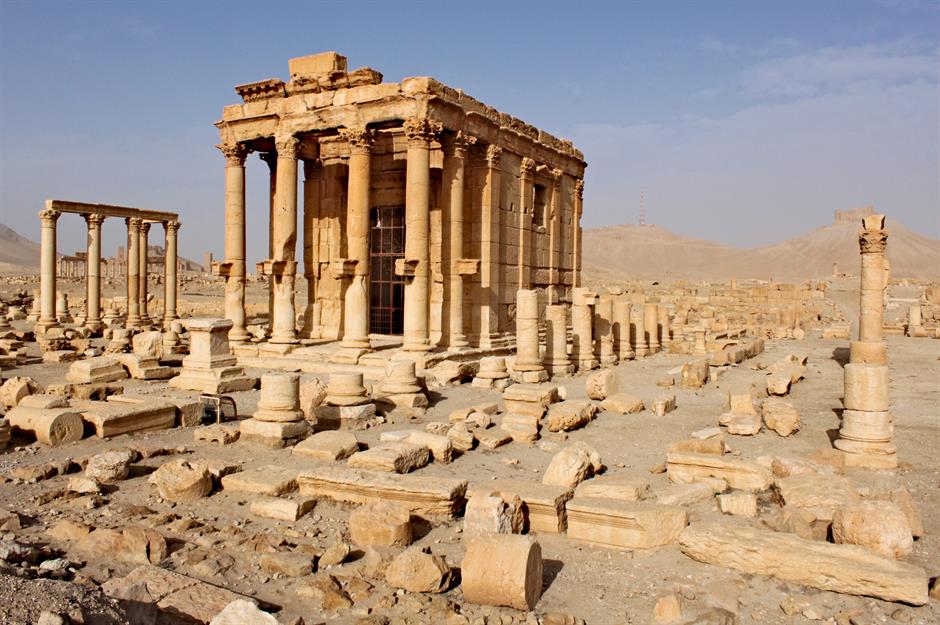
Tombs of Buganda Kings at Kasubi, Uganda
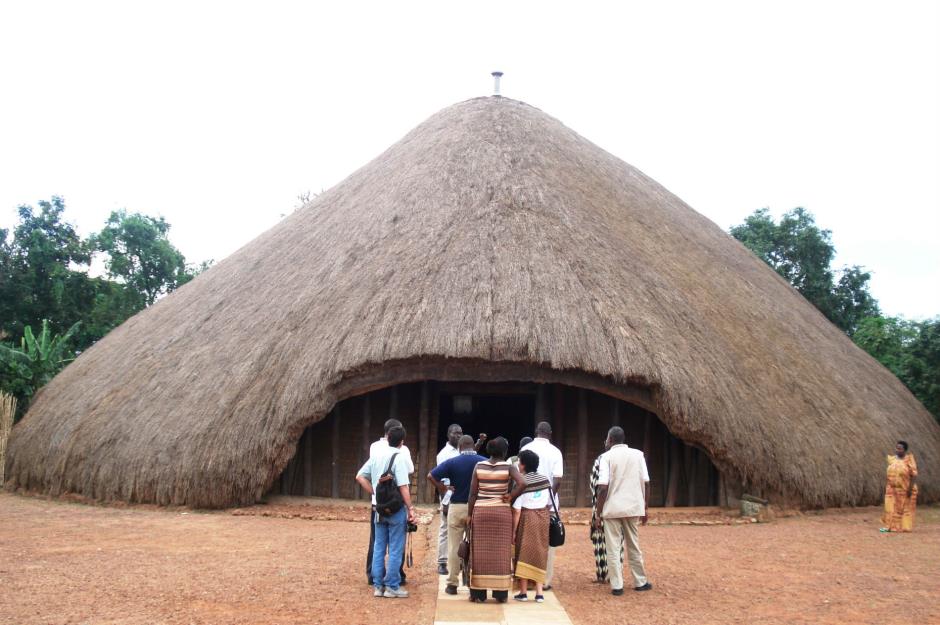
Uganda’s Tombs of Buganda Kings at Kasubi, in Kampala City, is the major spiritual site for the Baganda, Uganda’s largest ethnic group. It is the burial ground for the previous four kings and a centre for preserving traditional and cultural practices. In 2010, the site was ravaged by a fire which almost completely destroyed the Muzibu Azaala Mpanga building, the main structure here. Made of wood, reeds, bark cloth and dry grass, it contained four royal Buganda tombs. The building was fully restored in 2022.
How the world's weather is threatening popular tourist attractions
Selous Game Reserve, Tanzania
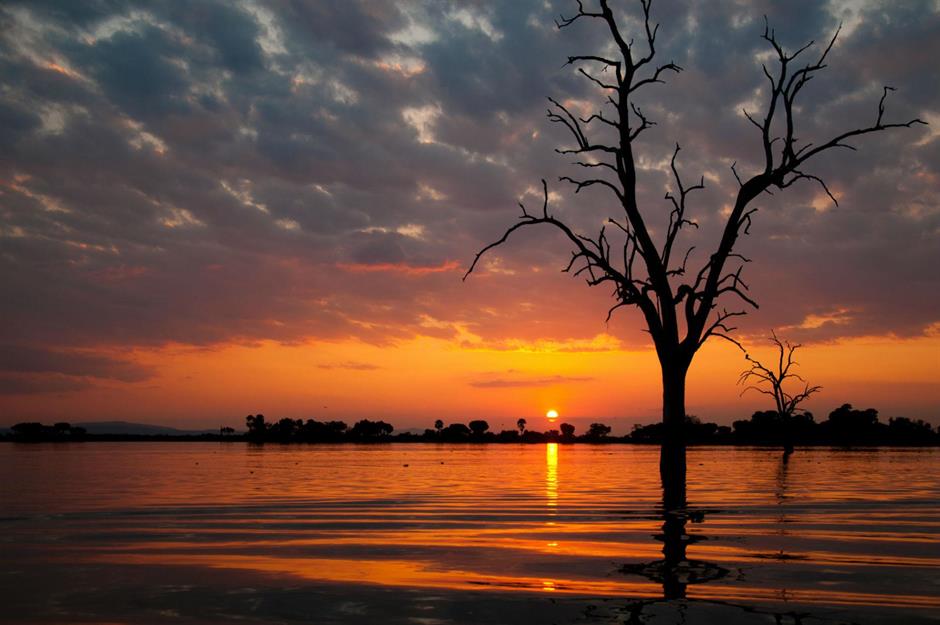
Everglades National Park, USA

Located in southern Florida, Everglades National Park is home to a huge number of birds, reptiles and threatened species including the manatee, American crocodile and Florida panther. In 2010, the World Heritage Committee deemed the park to be endangered because of serious degradation of its aquatic ecosystem. The condition is continuing, with reduced water inflows, increasing pollution, a loss of marine habitat and a subsequent decline in marine species.
Historic Centre of Shakhrisyabz, Uzbekistan
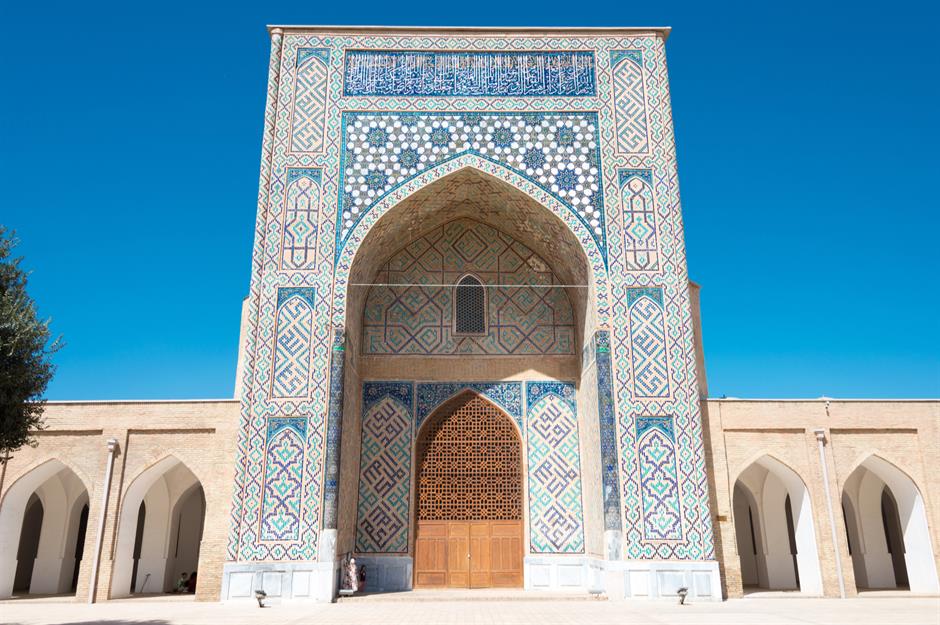
Located on the Silk Road in southern Uzbekistan, this 2,000-year-old city was the cultural and political centre of the Temurids in the 15th and 16th centuries. It’s significant for its collection of exceptional monuments and ancient quarters, which tell of the city's secular development. As well as parts of its medieval walls, the Ak-Sarai Palace, tomb of Temur and Chor-su bazaar are some of the centre's impressive remains. Shakhrisyabz was listed “in danger” in 2016 due to the over-development of tourist infrastructure within the site.
Coro and its Port, Venezuela
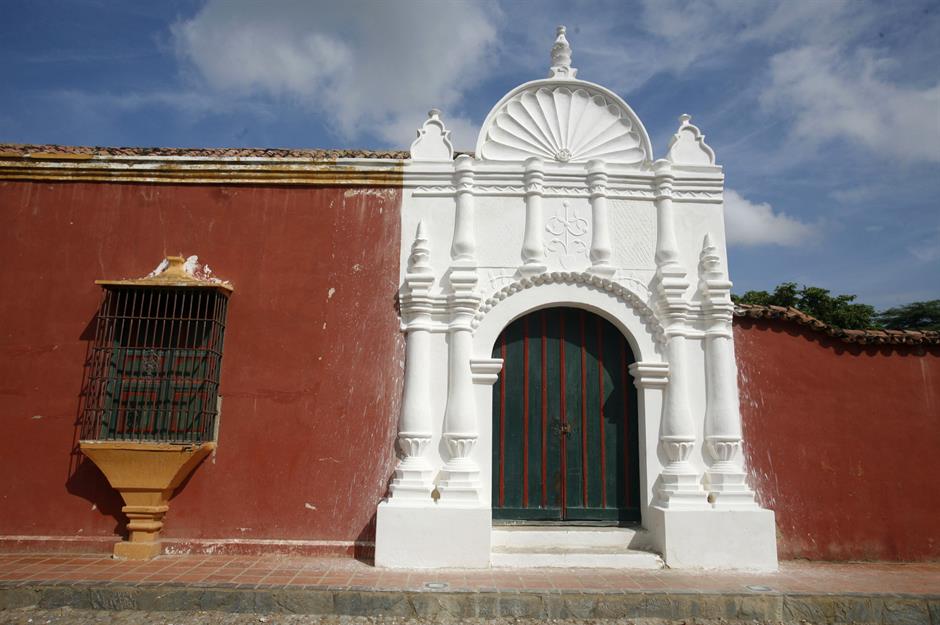
The pretty town and port of Coro in Venezuela dates from the earliest years of Spanish colonisation on the Caribbean coast of South America. It is noted by UNESCO for having usual earthen architecture with buildings displaying “unique examples of traditional mud building techniques”. It became an endangered site in 2005 due to damage inflicted by unusually heavy rains in late 2004 and early 2005.
Historic Town of Zabid, Yemen
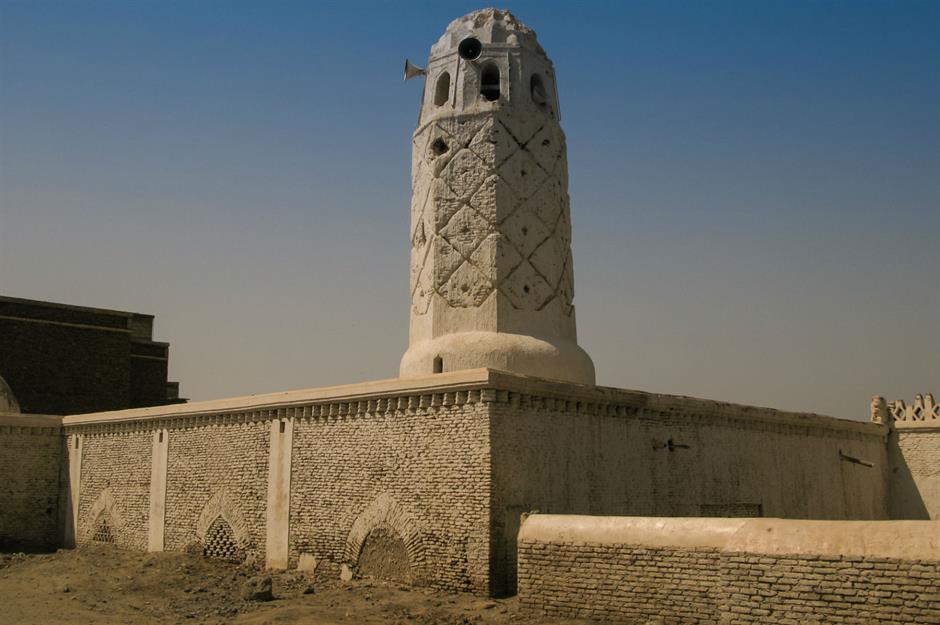
The second of Yemen's four places on the danger list is former capital (from 13th-15th centuries) Zabid, known for having the highest concentration of mosques in the country, including the world's fifth oldest. Zabid has also played a significant role in the Arab and Muslim world for centuries. Its sandy-coloured streets, traditional minarets and houses are fine examples of the architectural style of the early years of Islam. It was named a UNESCO World Heritage Site in 1993 and placed on the danger list in 2000, with neglect, poverty and conflict within Yemen's government all to blame.
Old City of Sana'a, Yemen
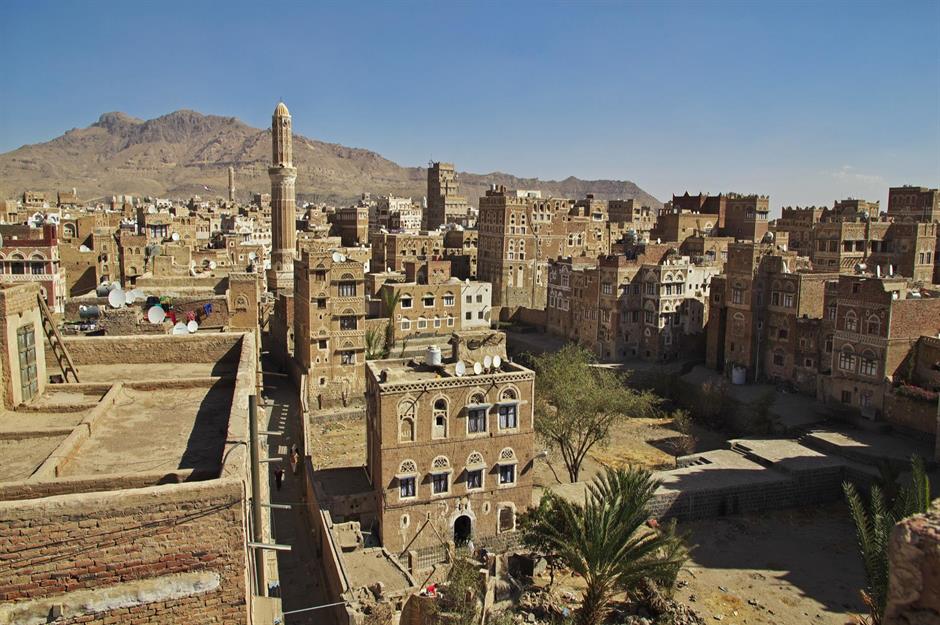
Famed for its distinctive multi-storied buildings, constructed of “rammed earth” and decorated with geometric patterns, Yemen’s capital is one of the oldest and highest cities in the world. The old city is packed full of exceptional examples of Islamic and Ottoman architecture, which sadly have sustained serious damage due to civil unrest and Saudi-led air strikes. The old city was declared in danger by UNESCO in 2015.
Take a look at these natural wonders facing a perilous future
Old Walled City of Shibam, Yemen
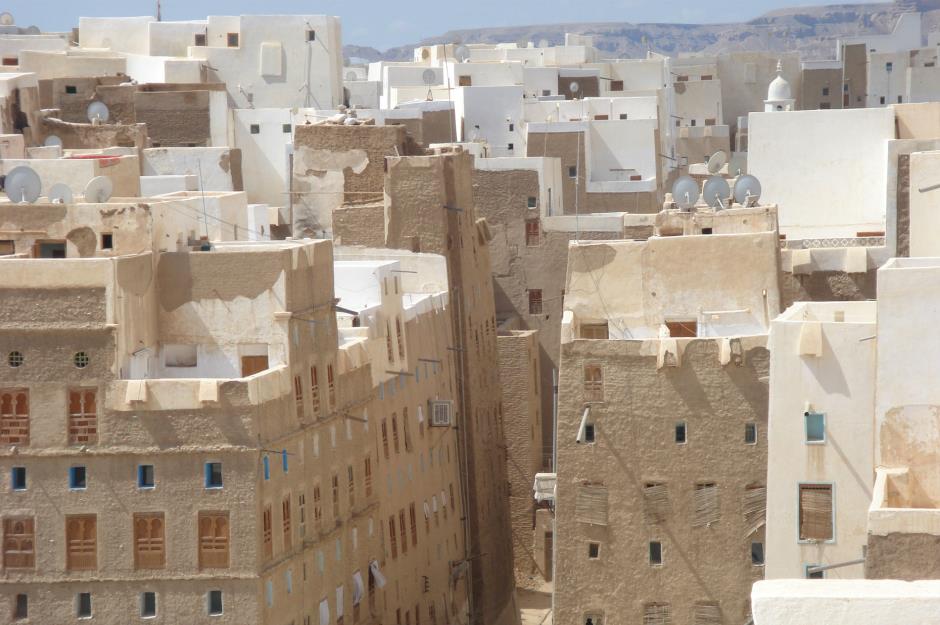
Nicknamed "the Manhattan of the desert", the 16th-century city of Shibam, surrounded by a wall, is hailed by UNESCO as "one of the oldest and best examples of urban planning based on the principle of vertical construction”. But the city is under threat due to armed conflict in the country. UNESCO placed the city on the List of World Heritage in Danger in 2015, with the director-general Irina Bokova saying: “In addition to causing terrible human suffering, these attacks are destroying Yemen’s unique cultural heritage."
Now discover the country with the most UENSCO World Heritage Sites
Comments
Be the first to comment
Do you want to comment on this article? You need to be signed in for this feature